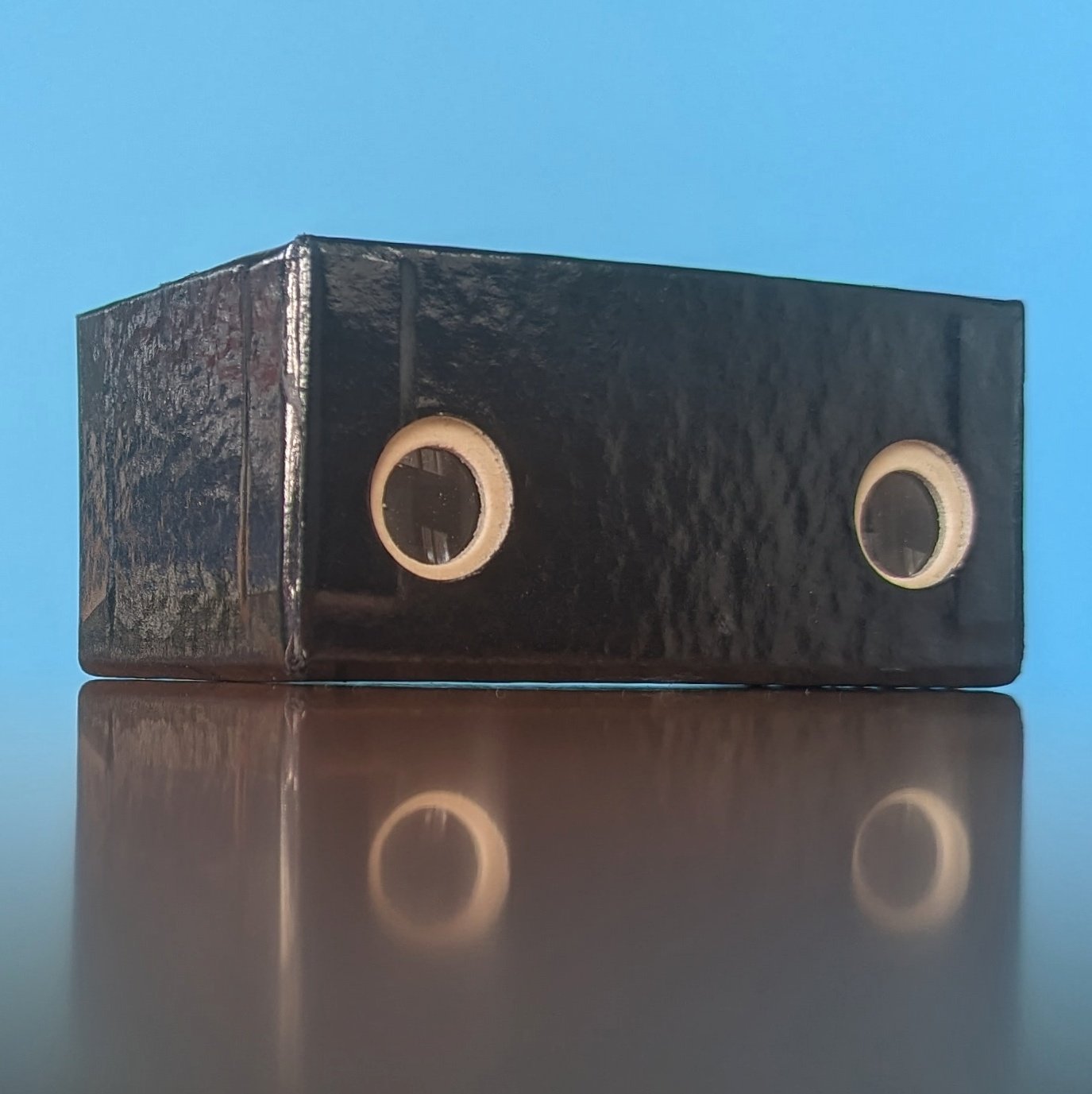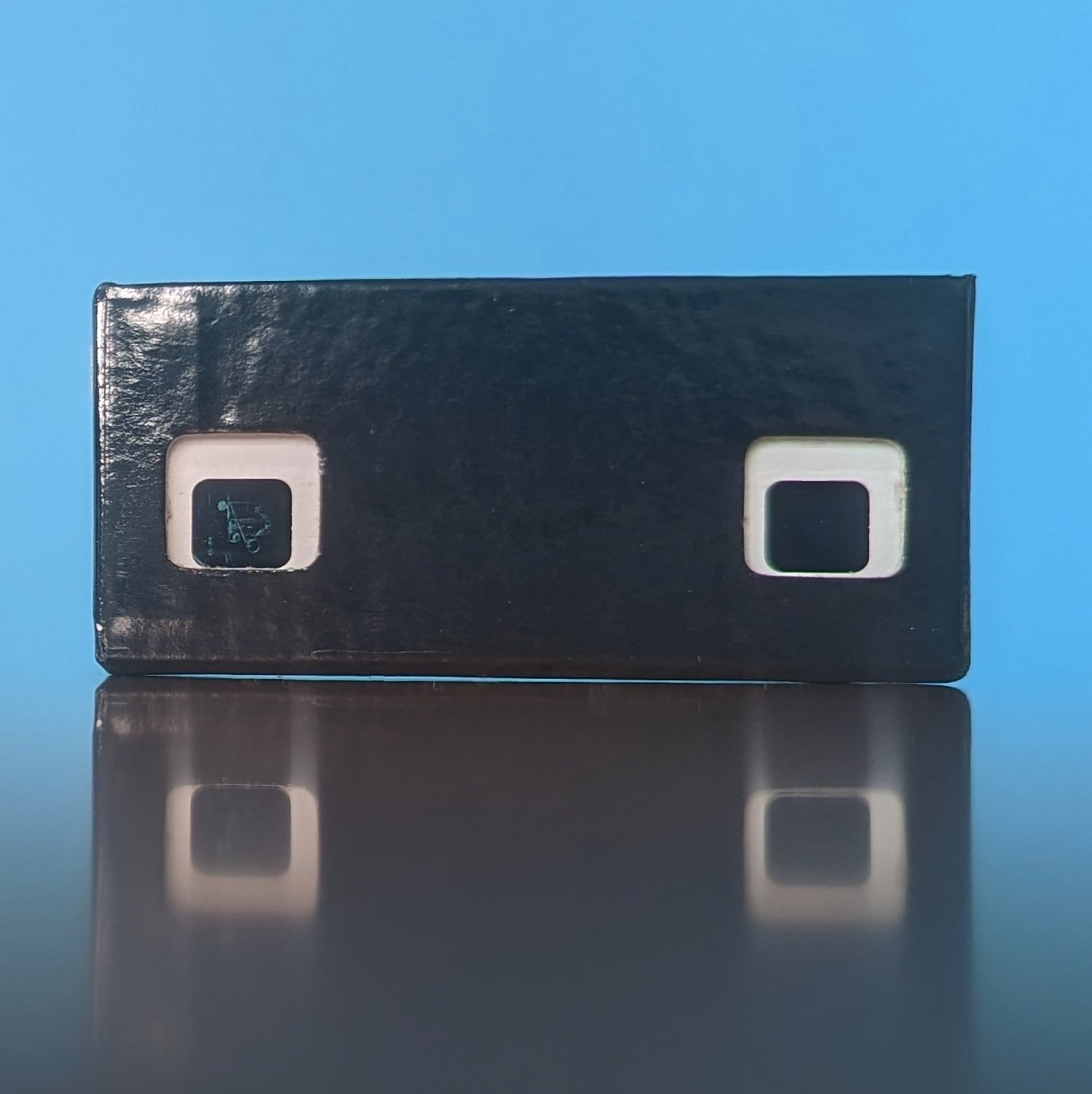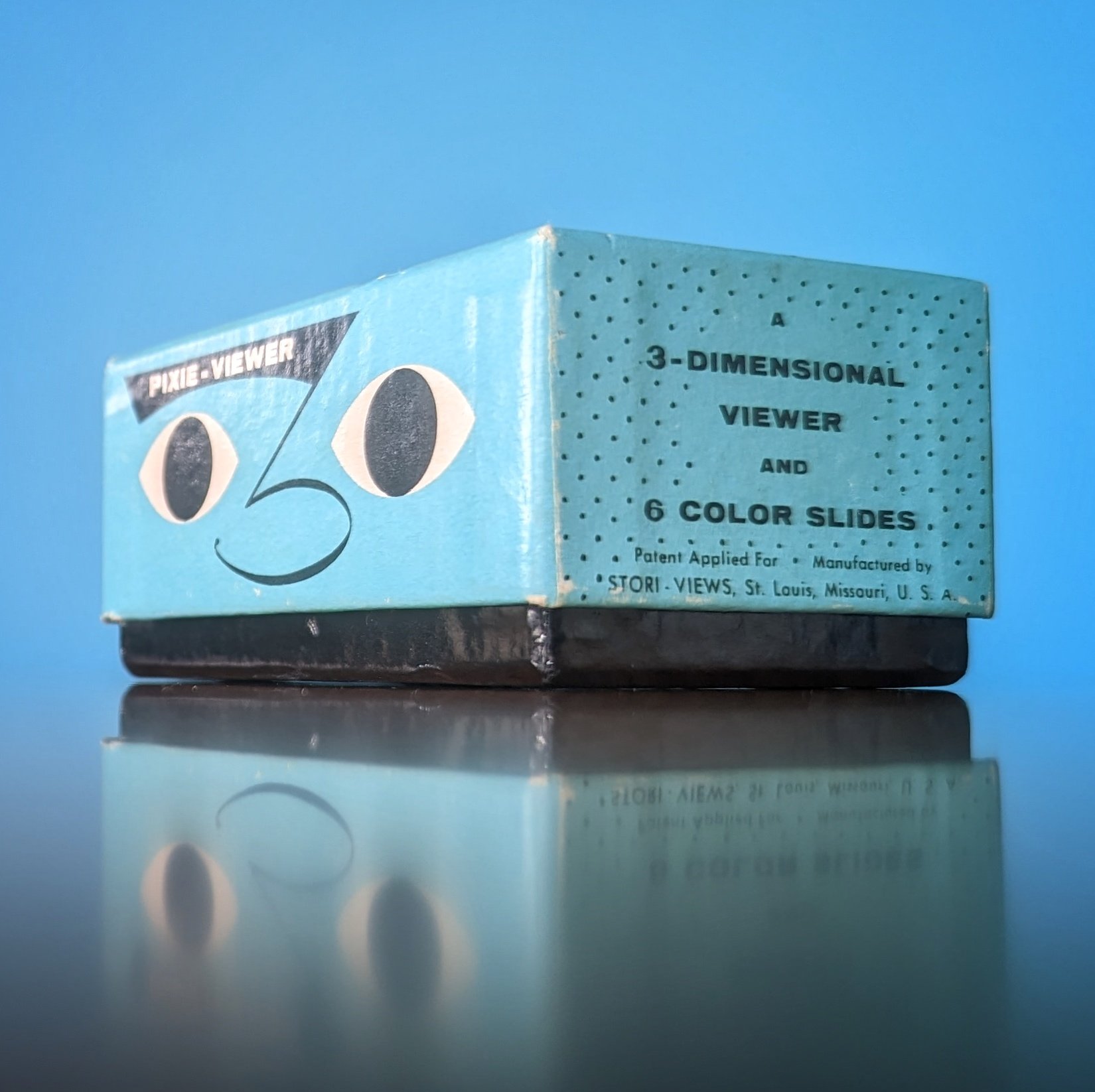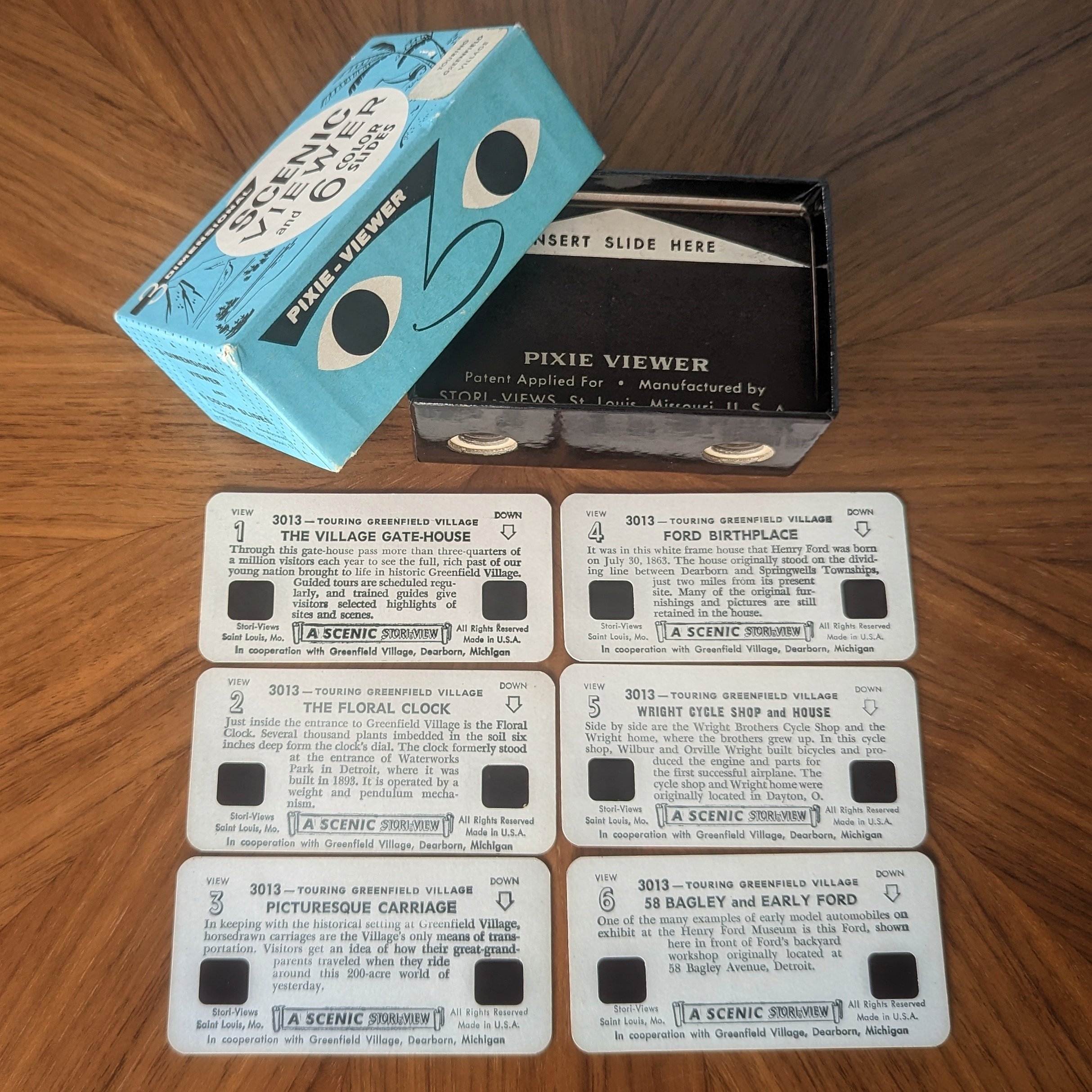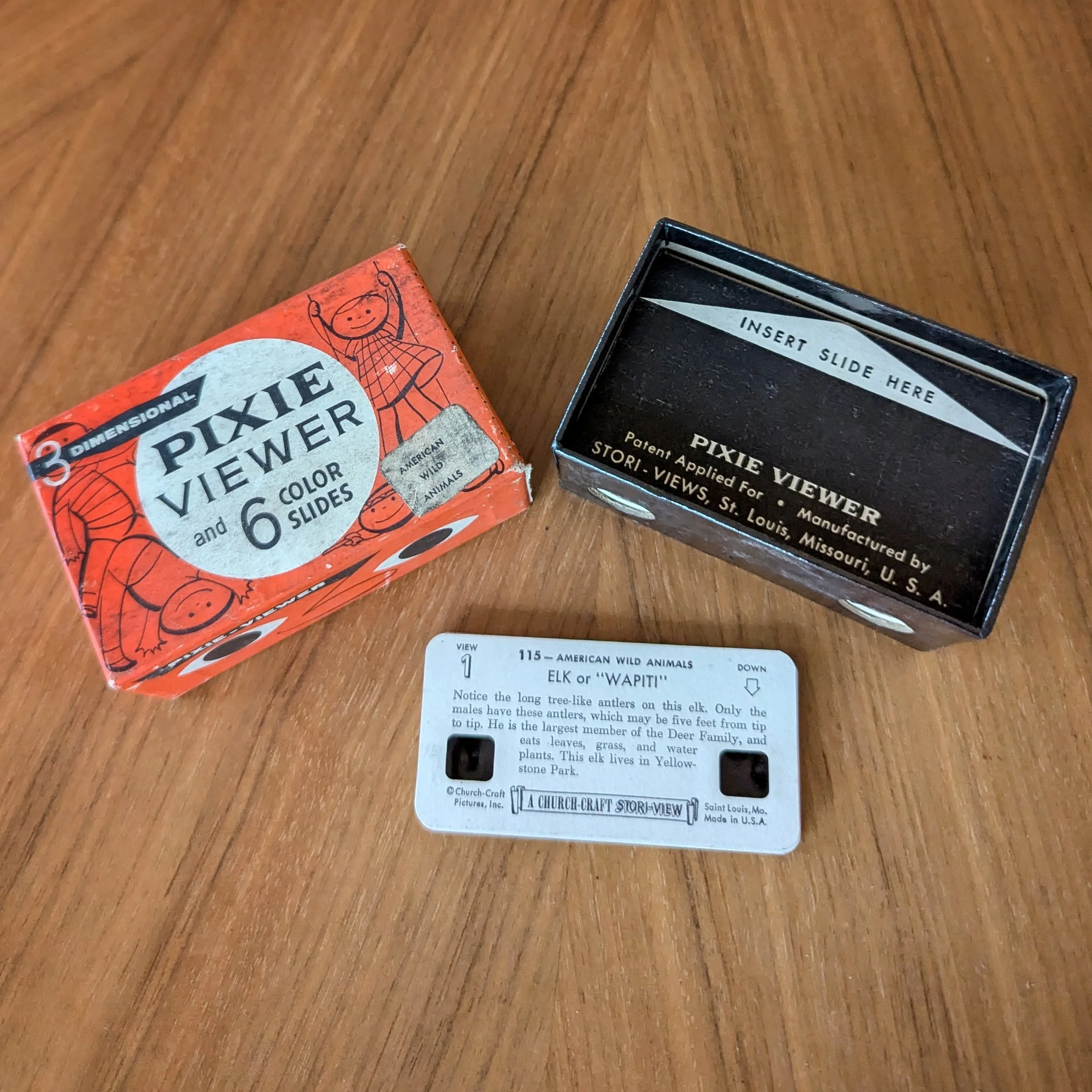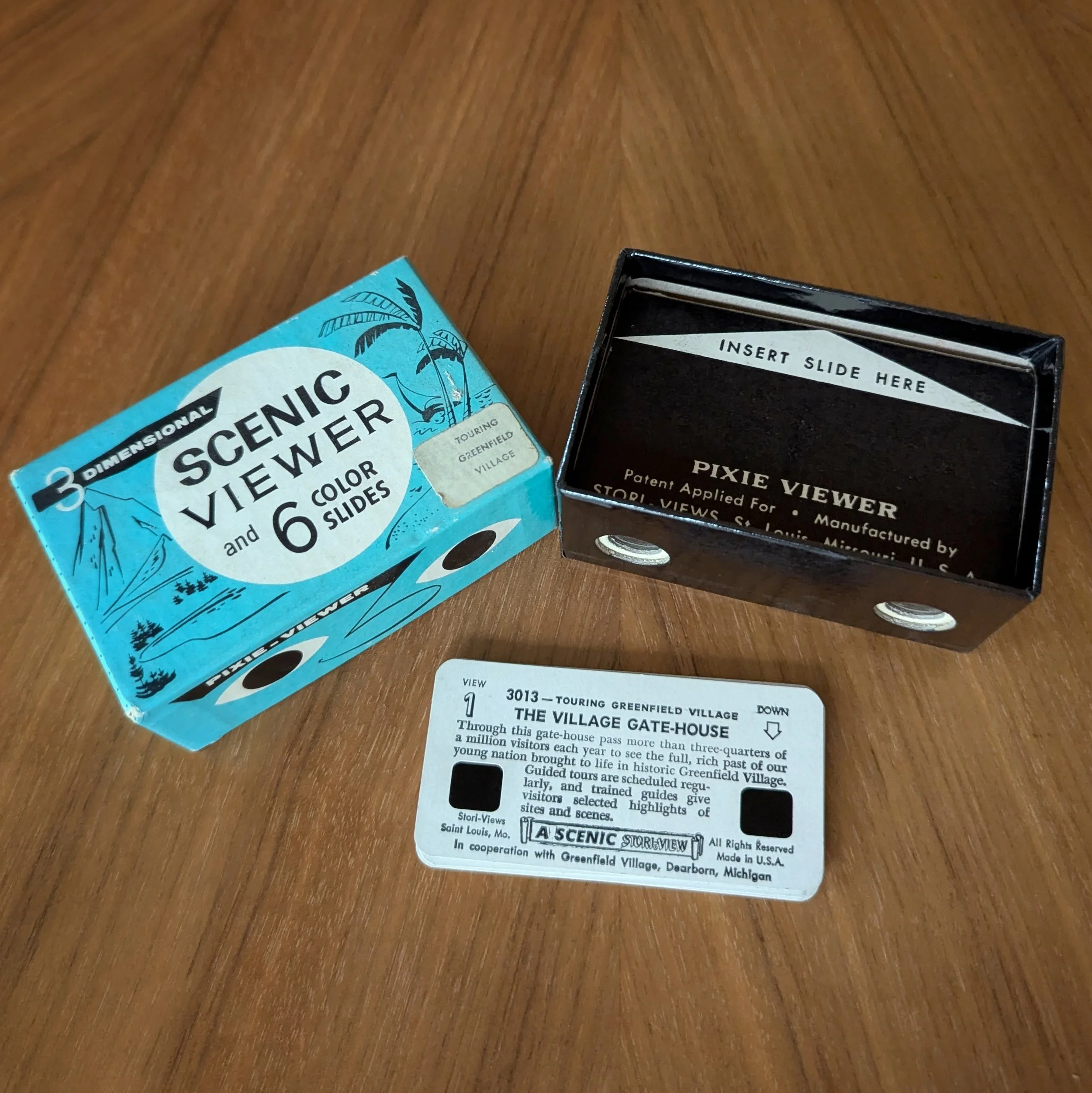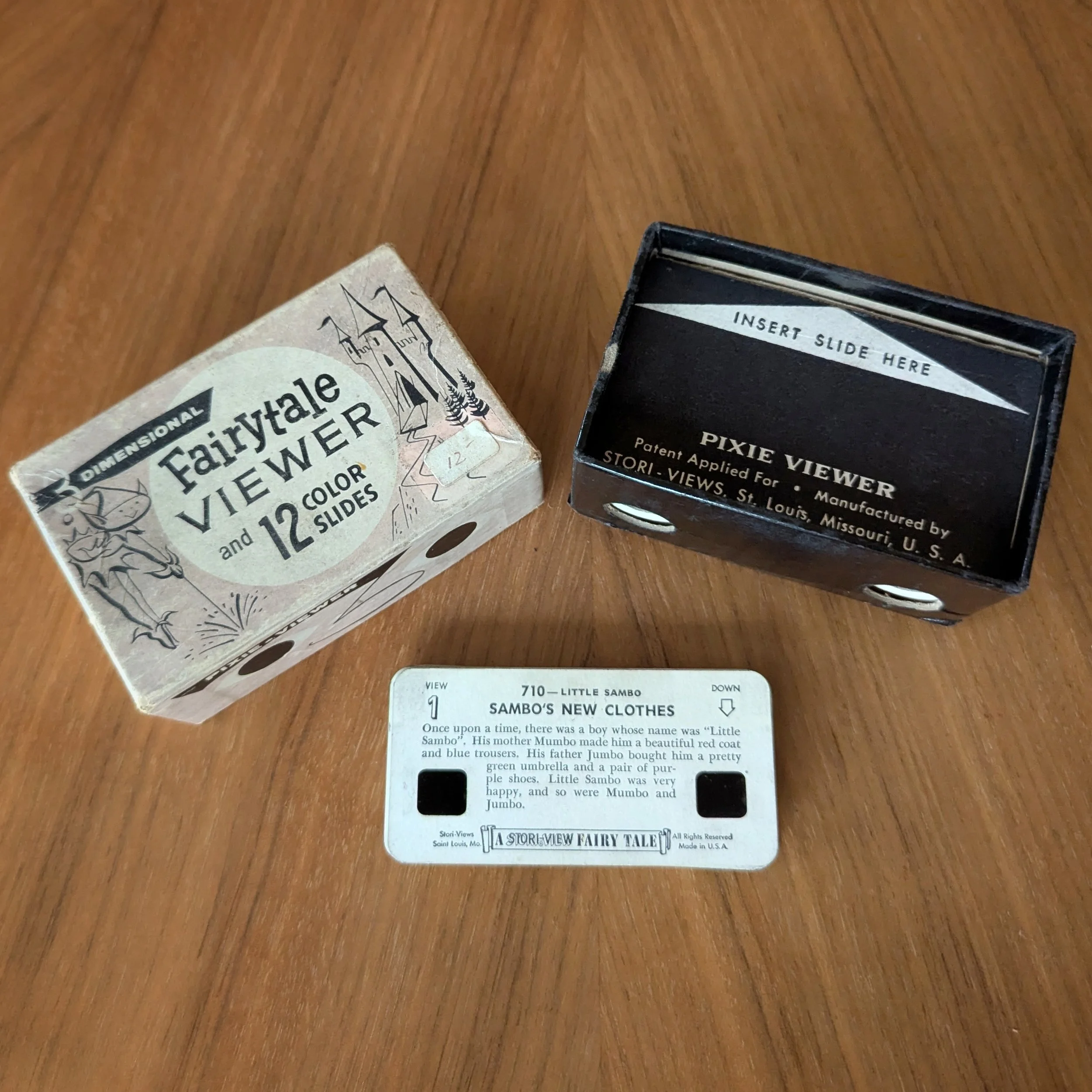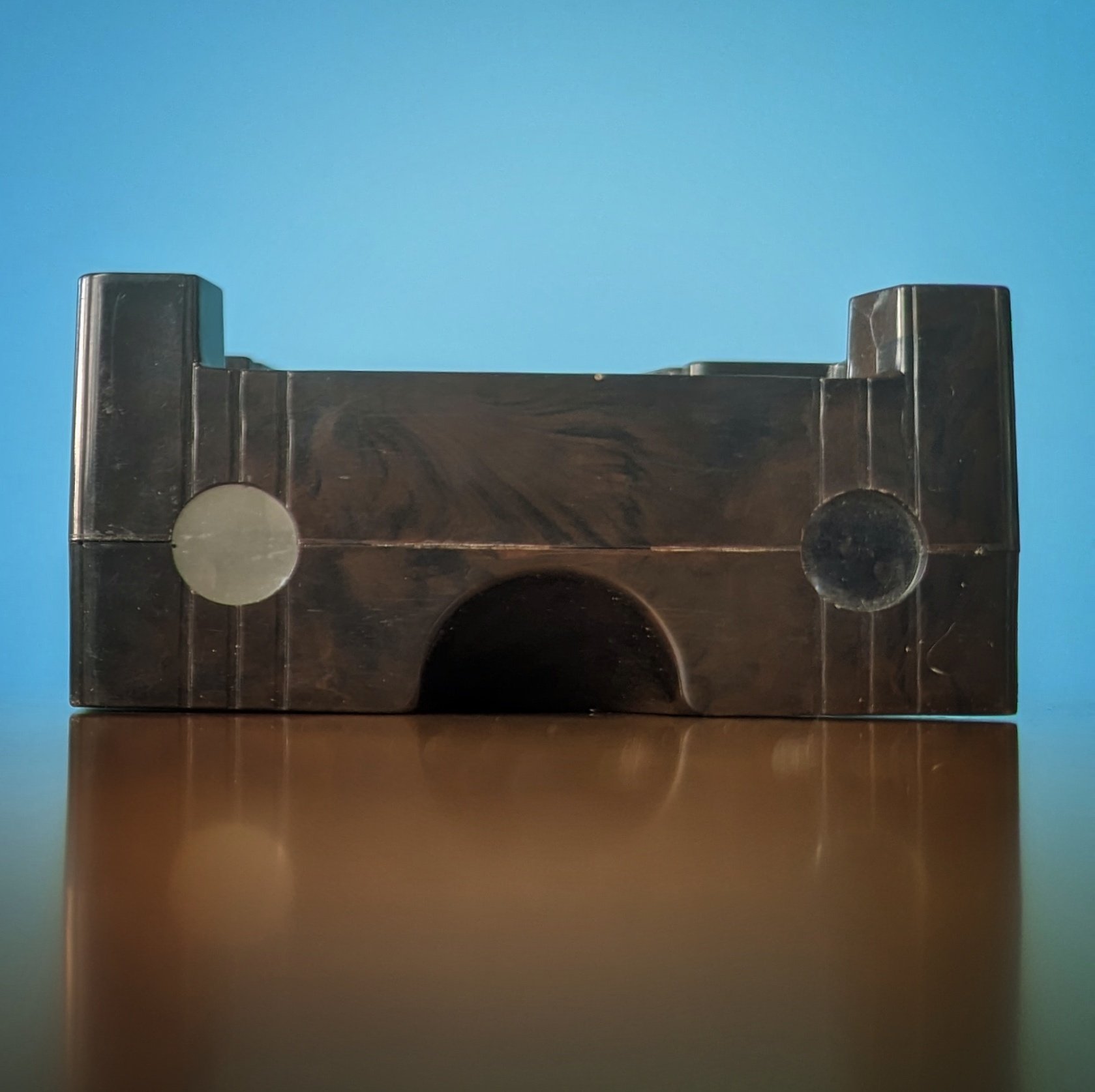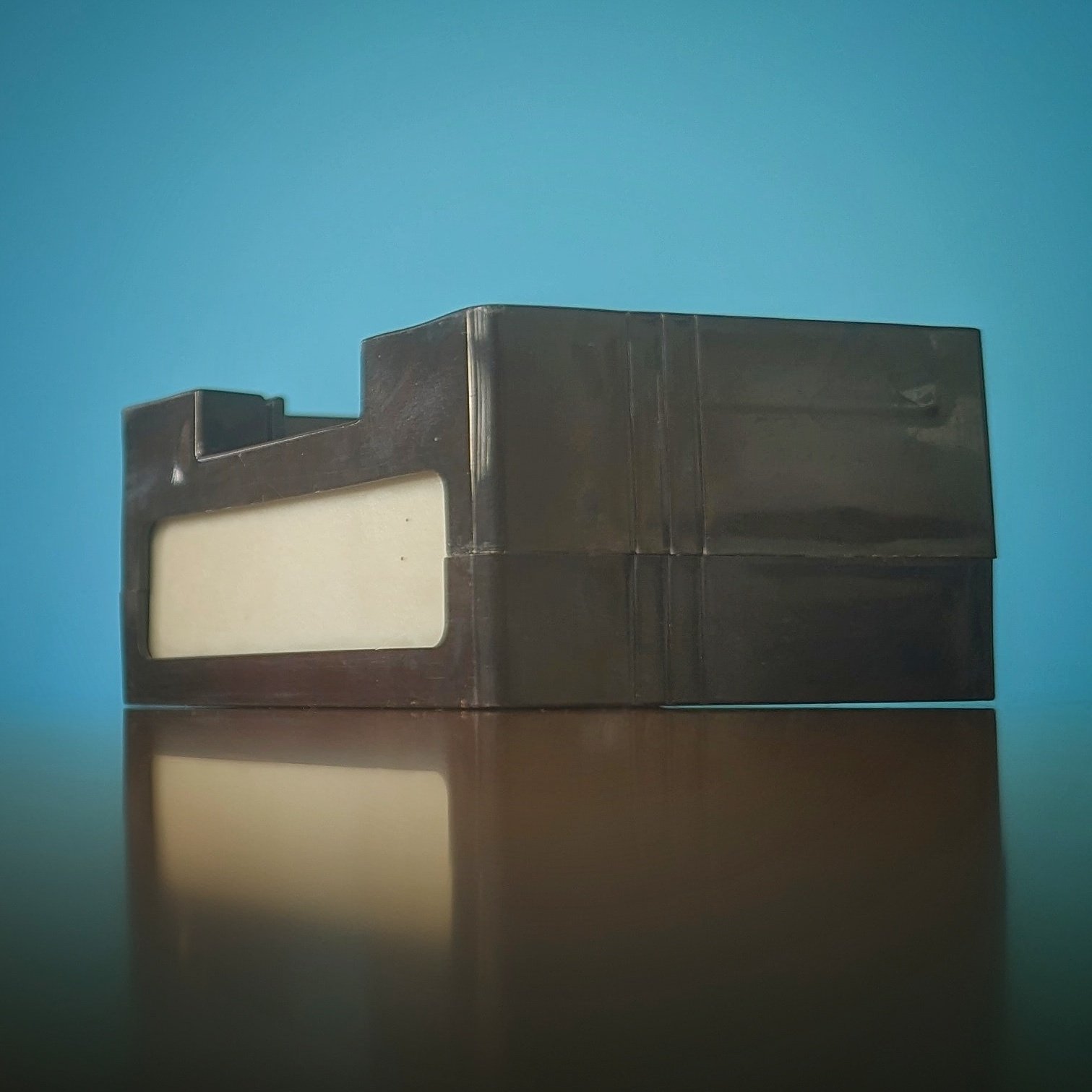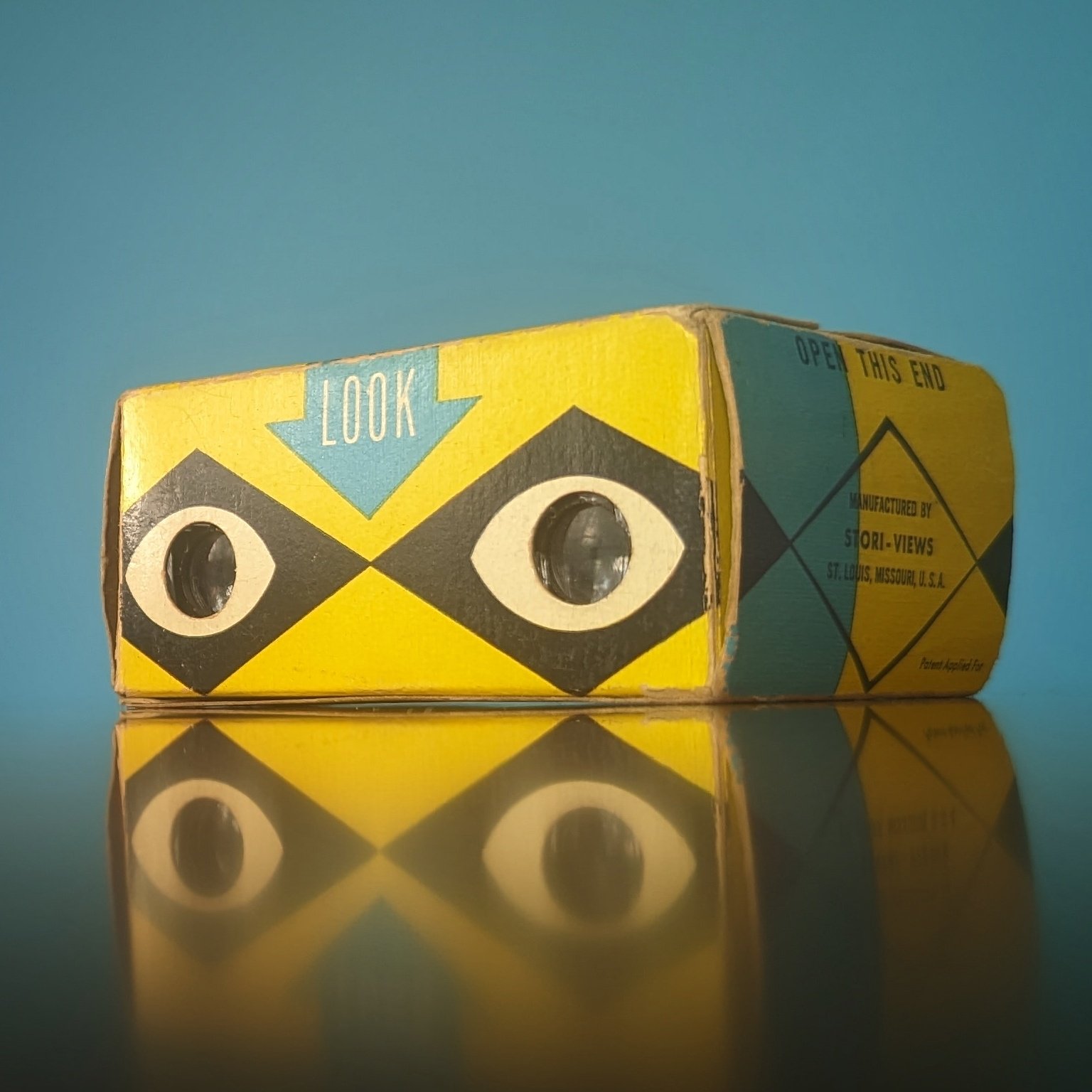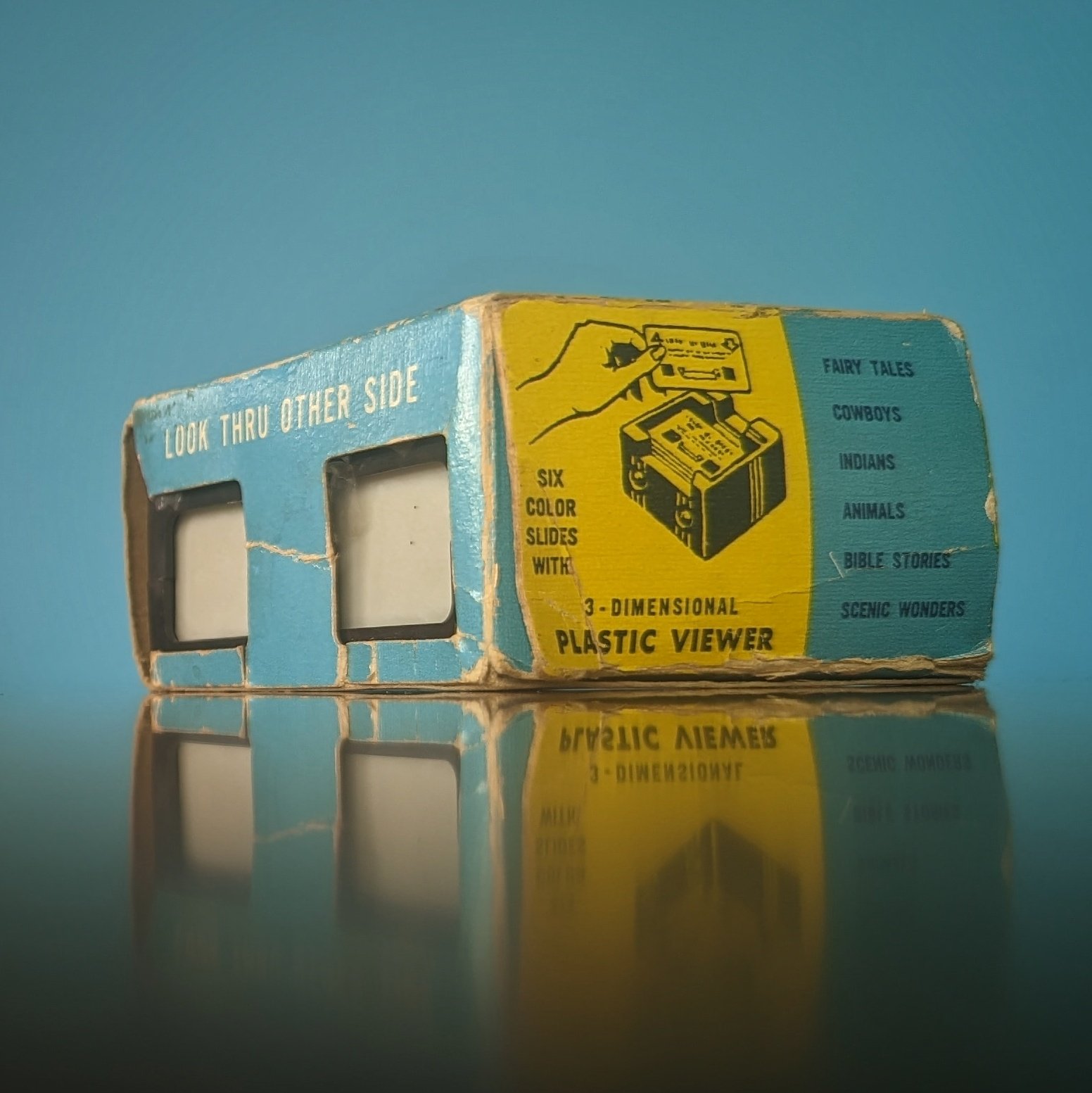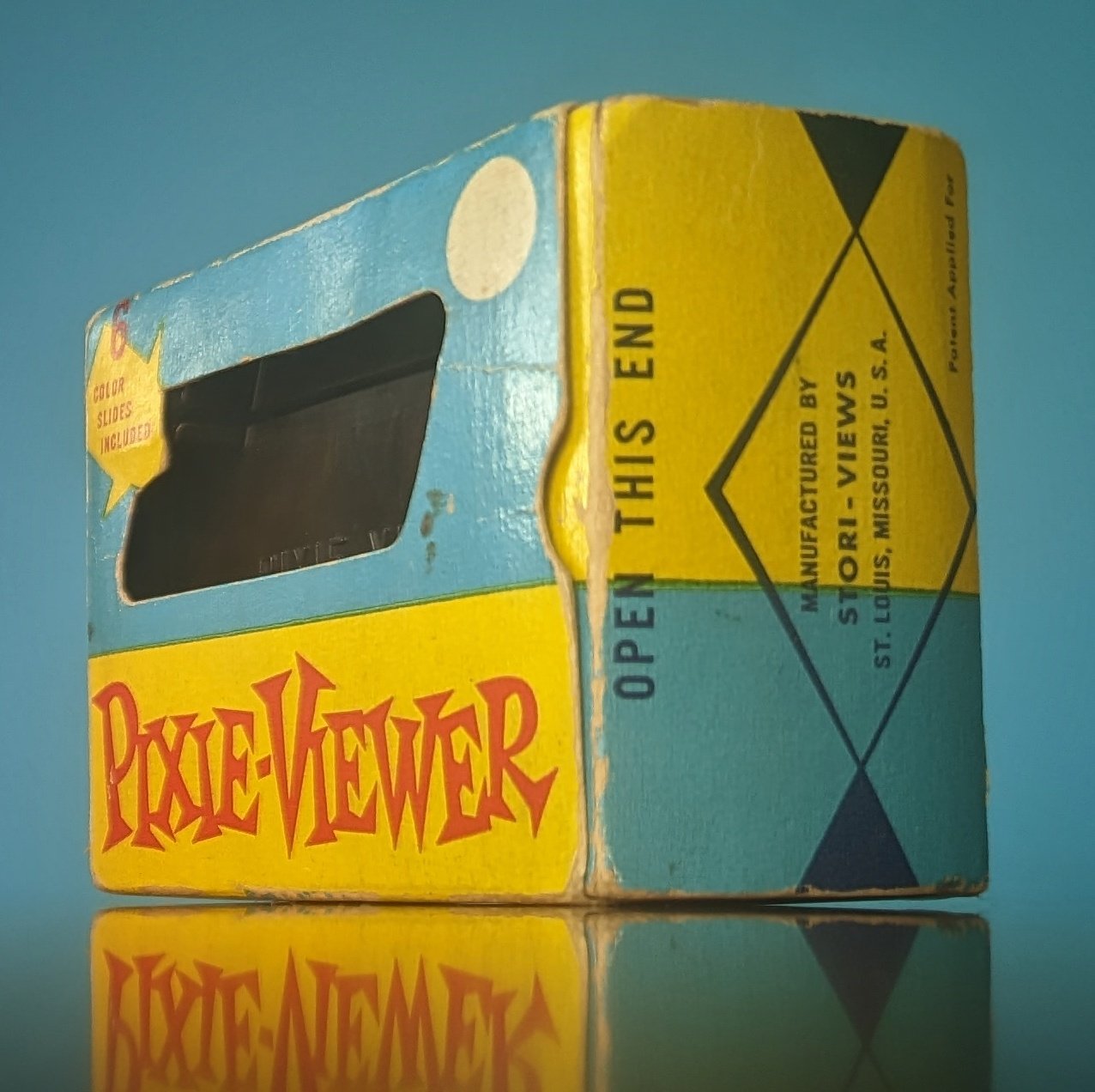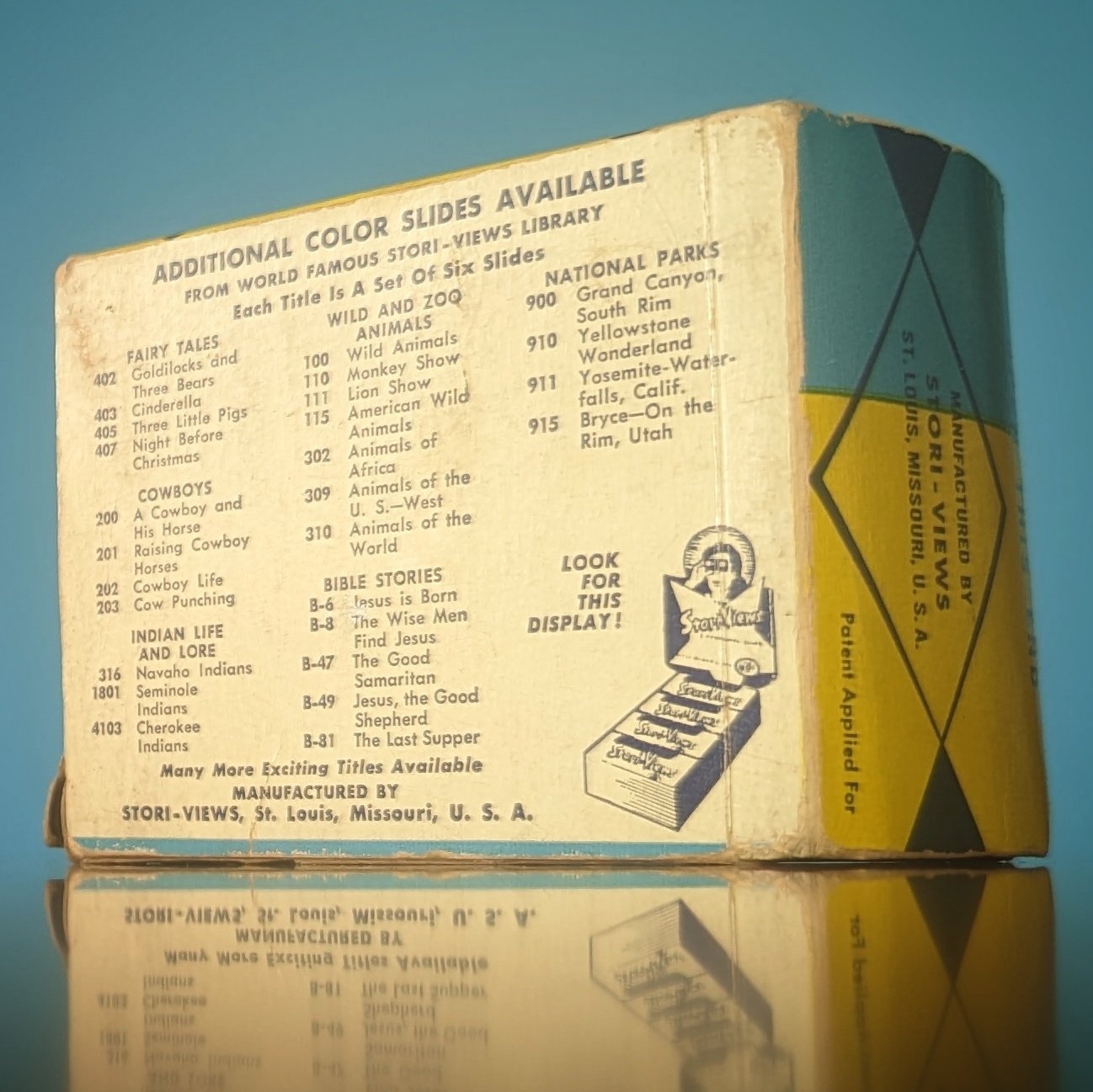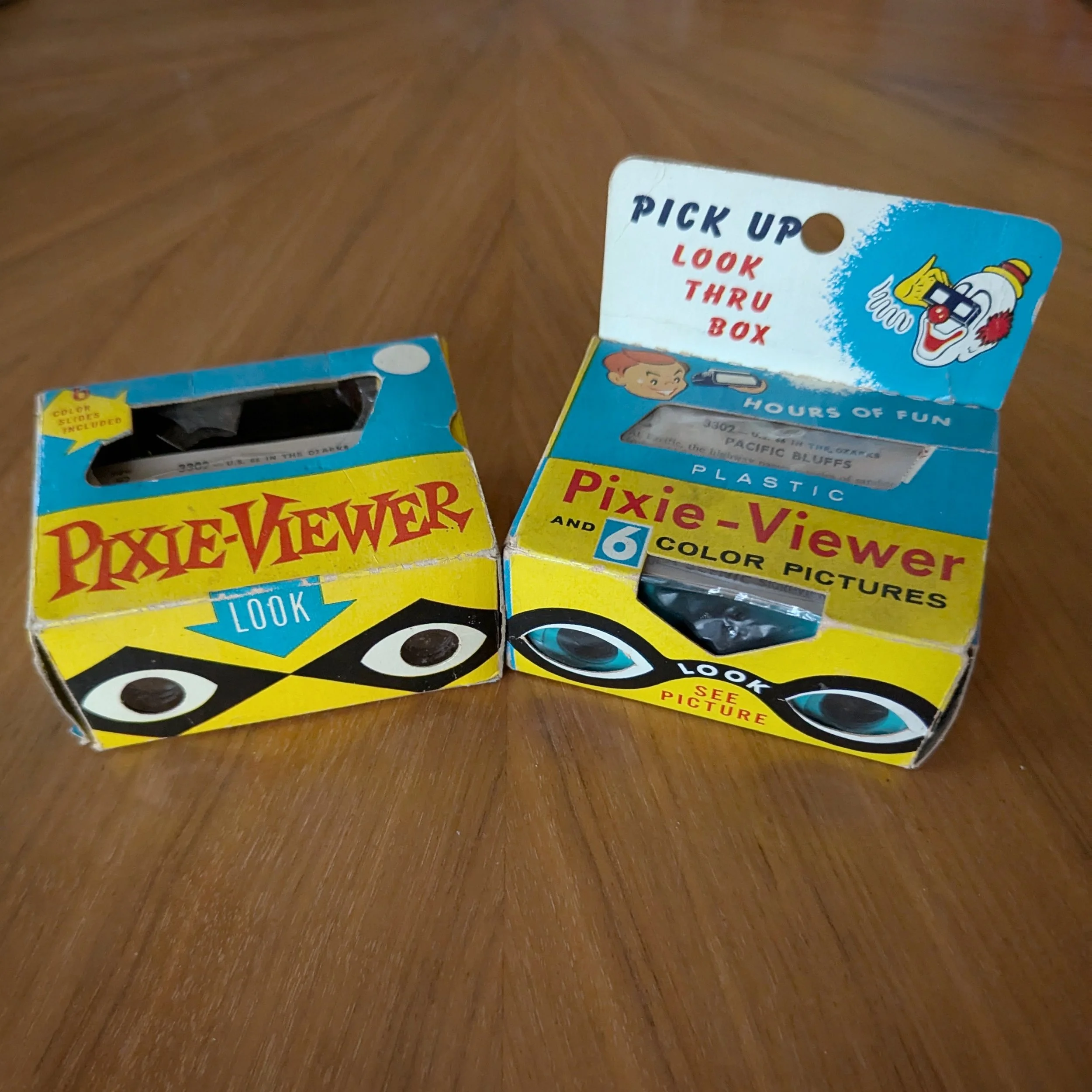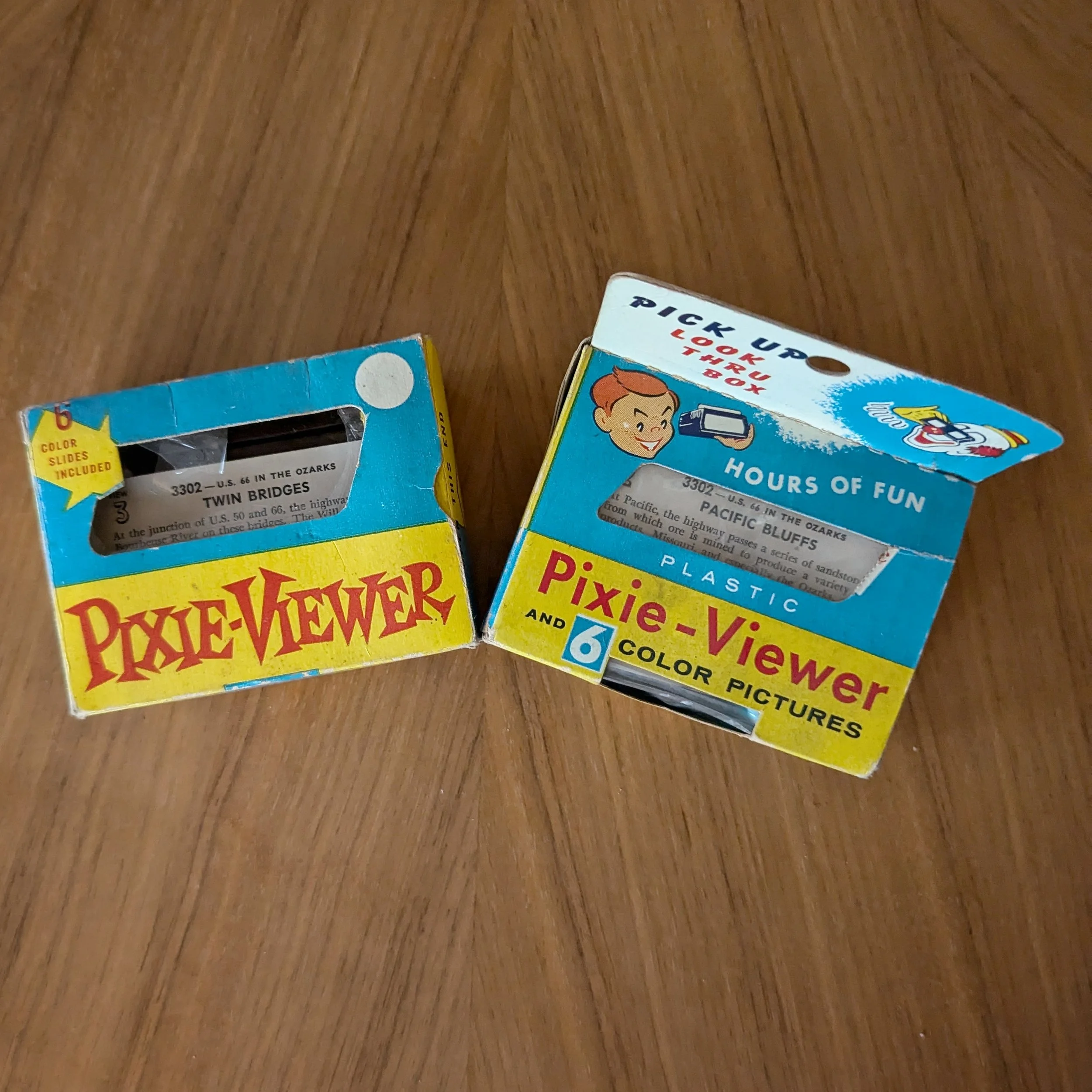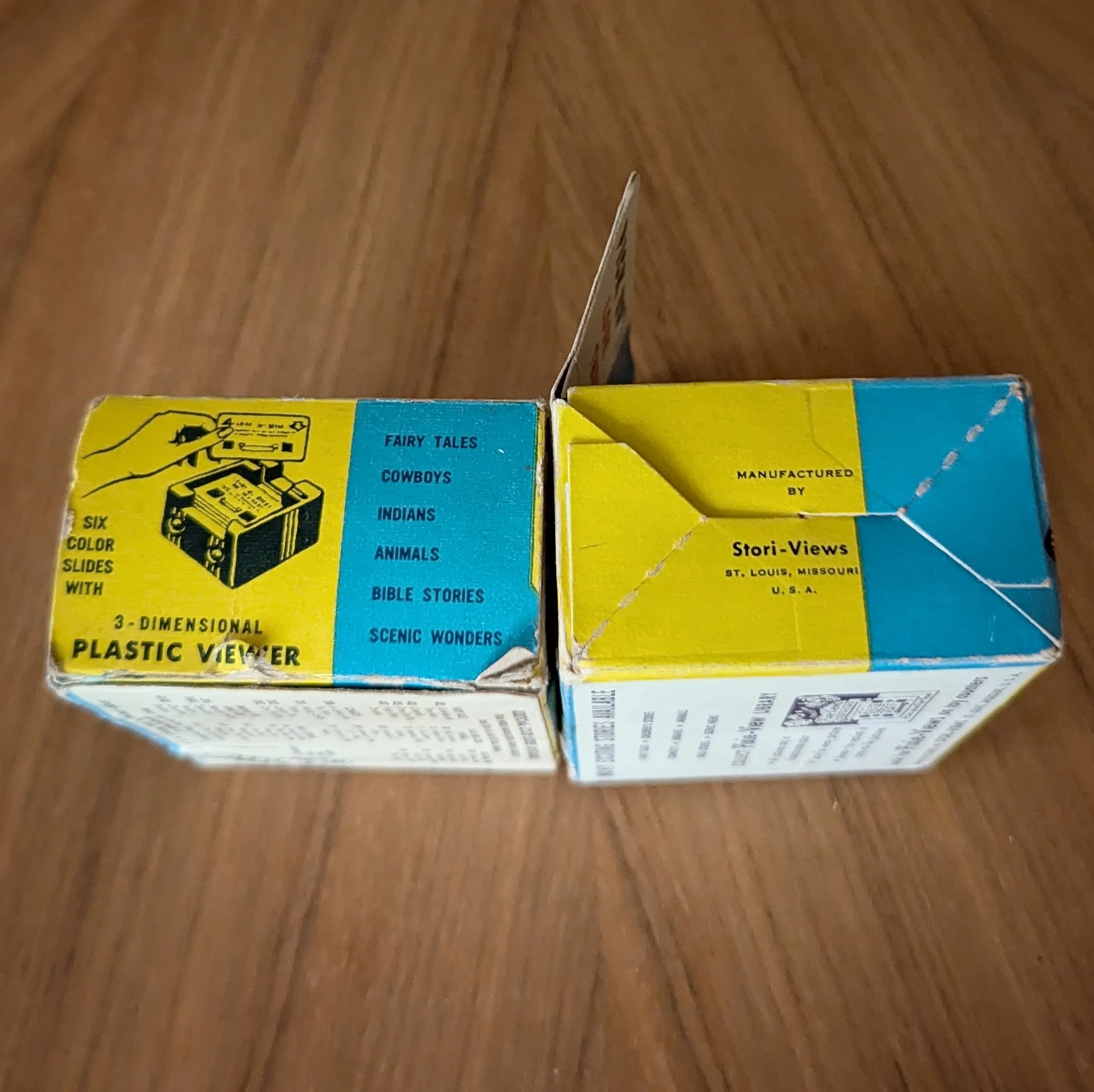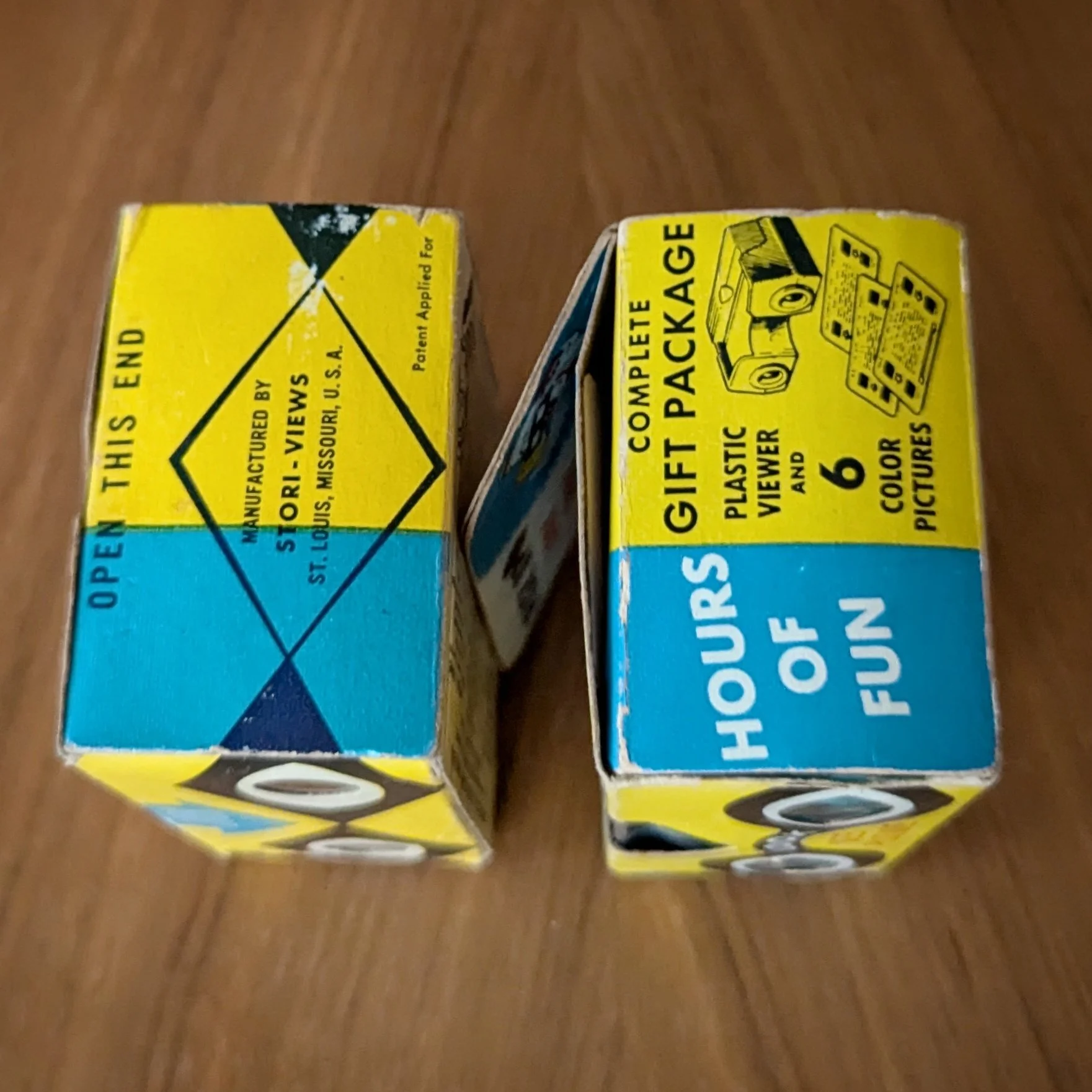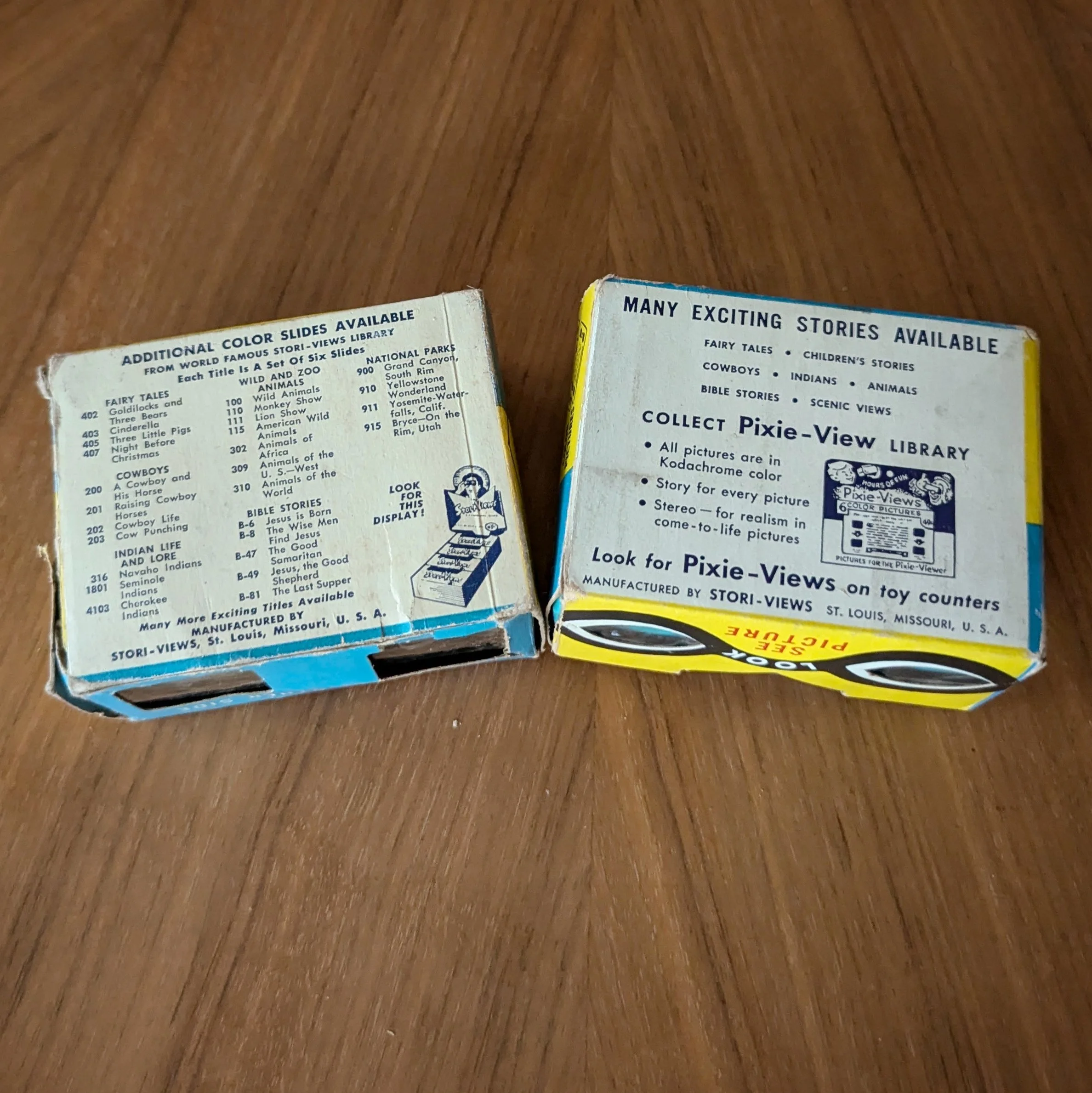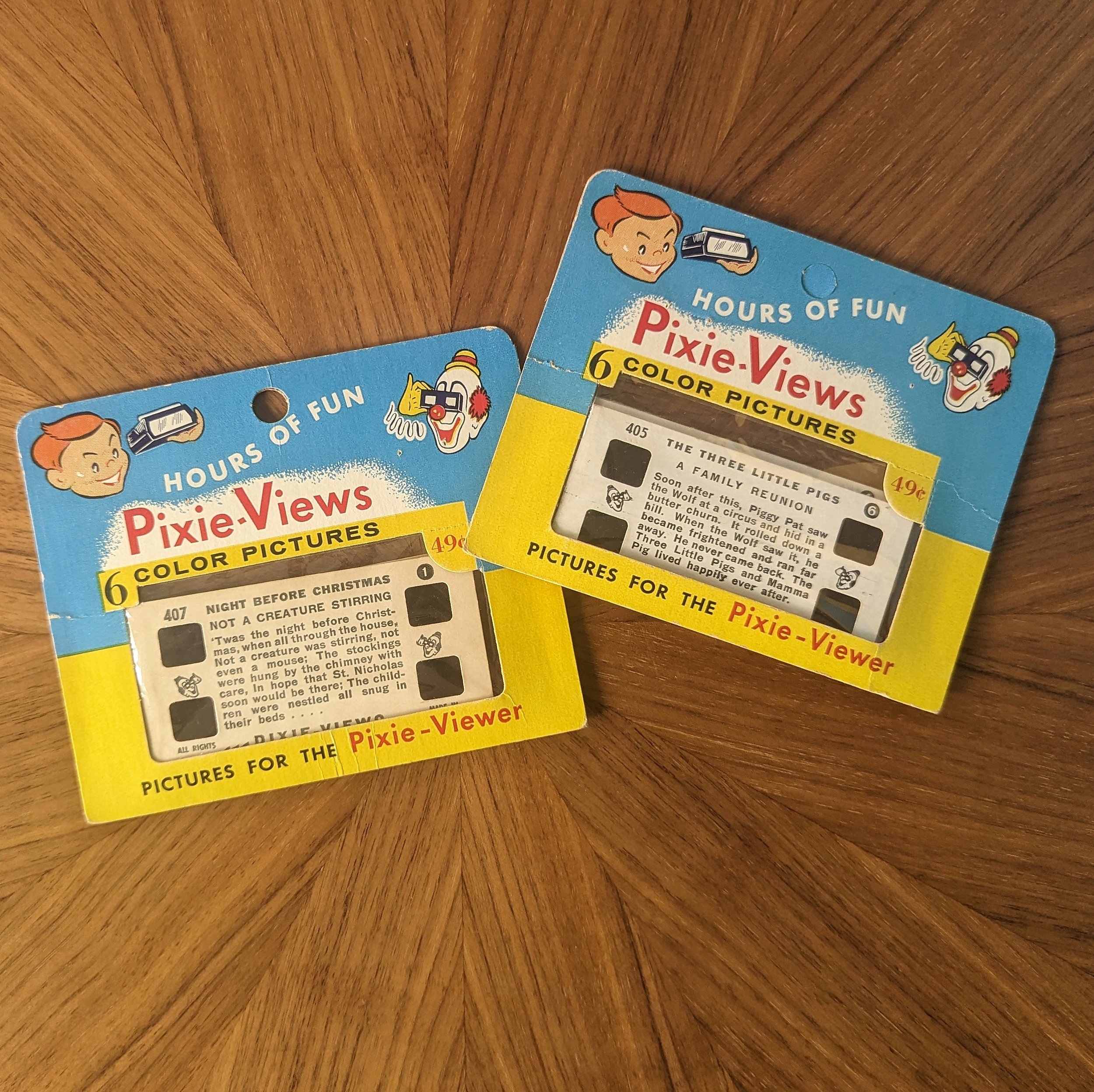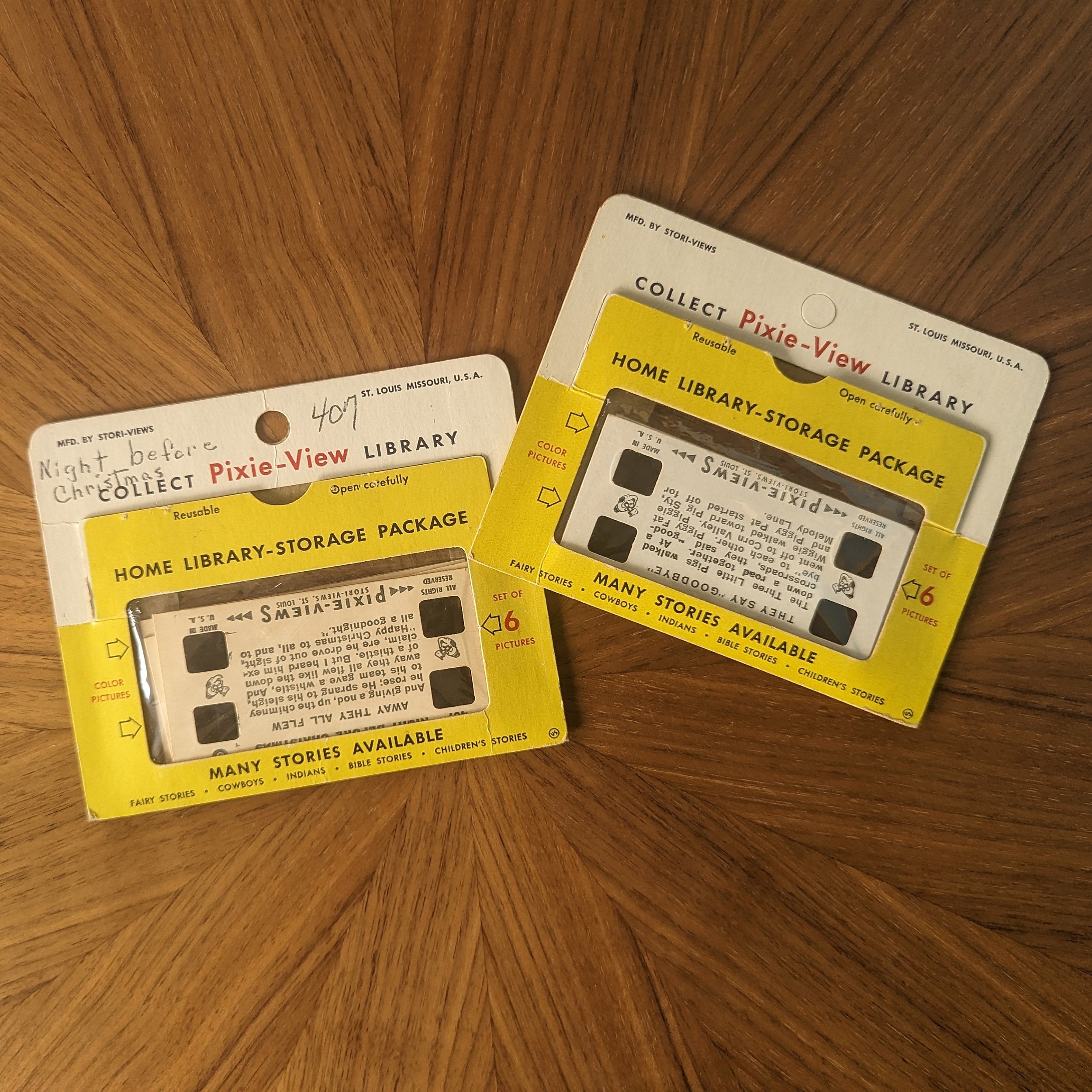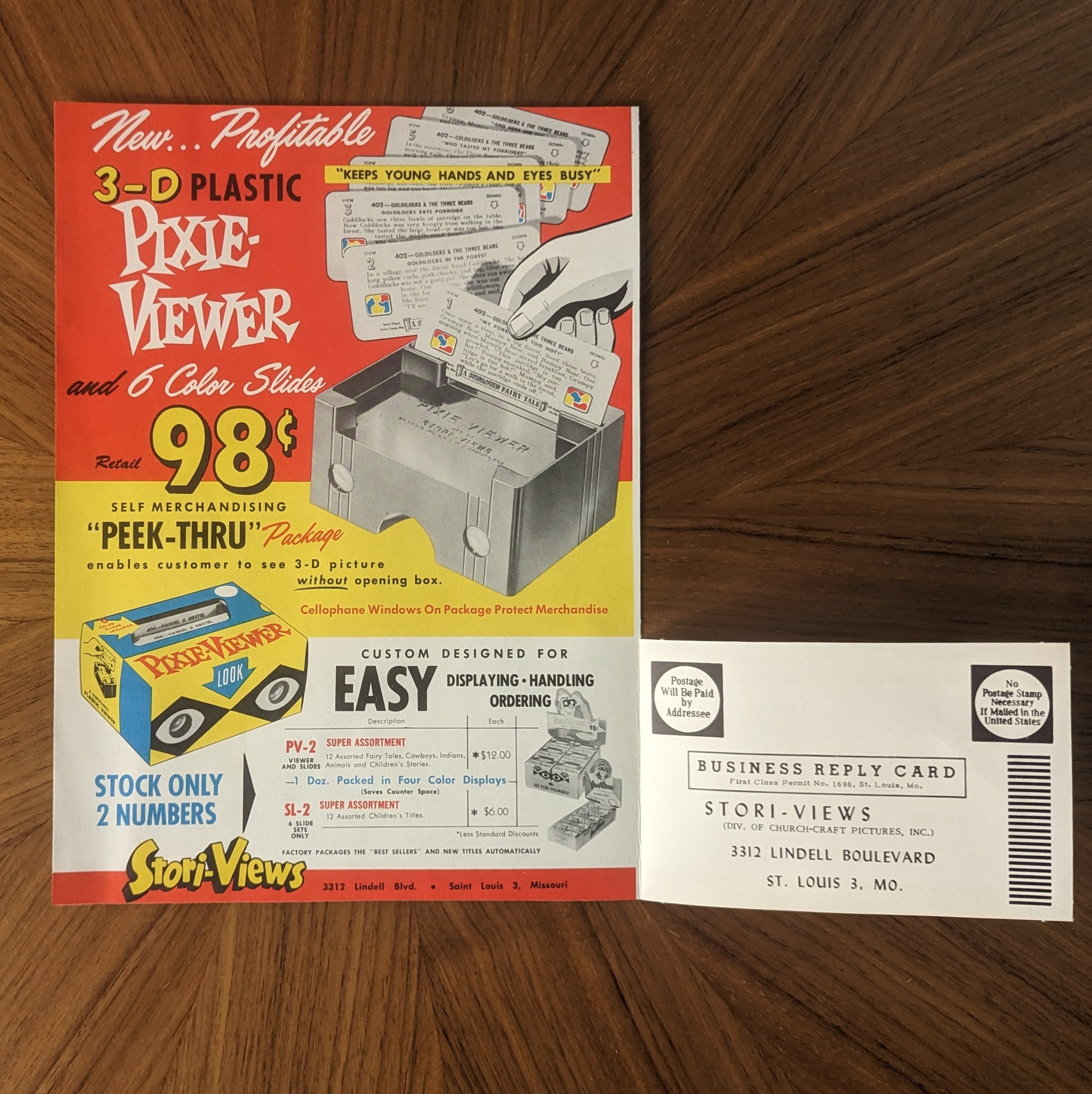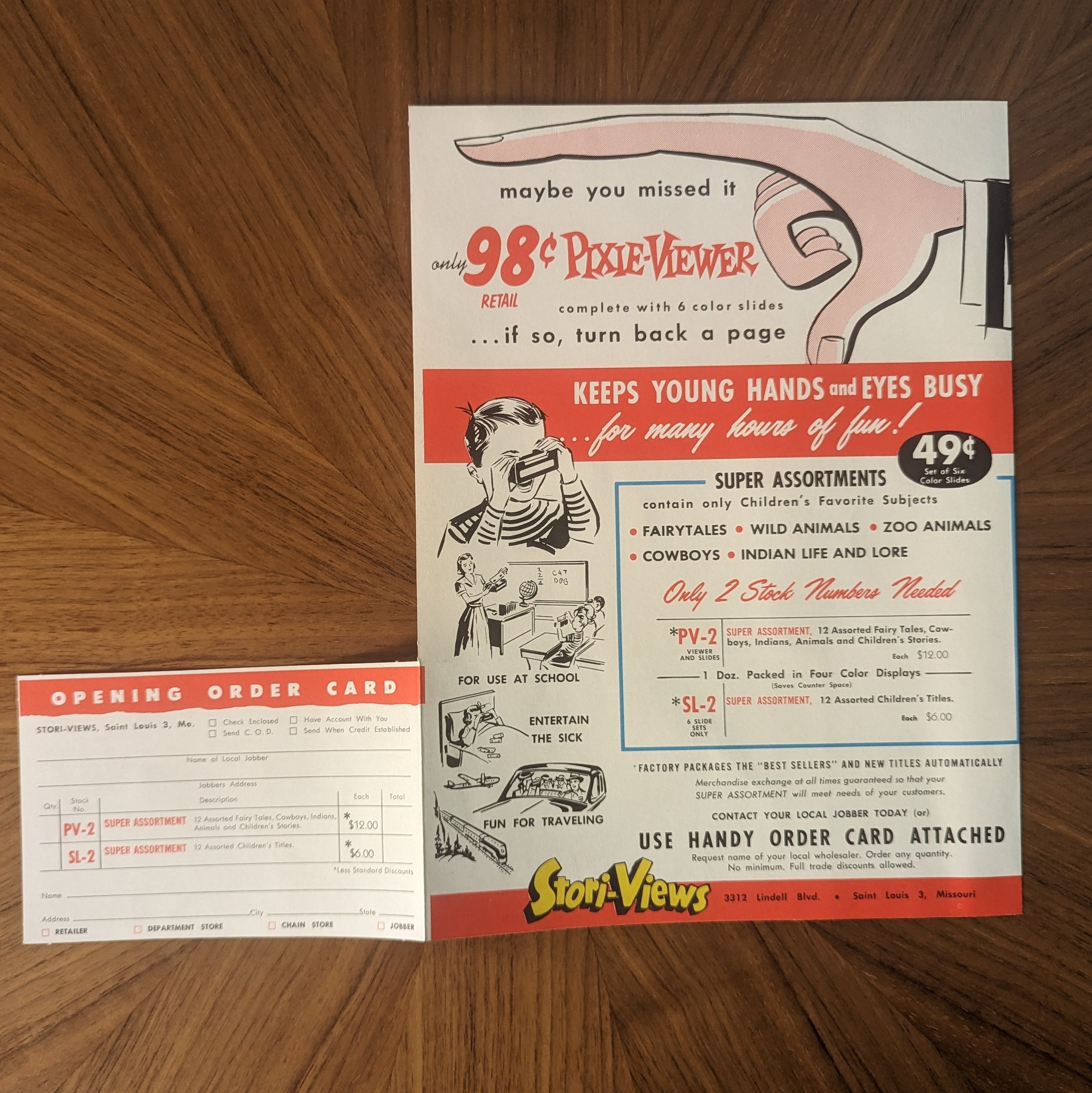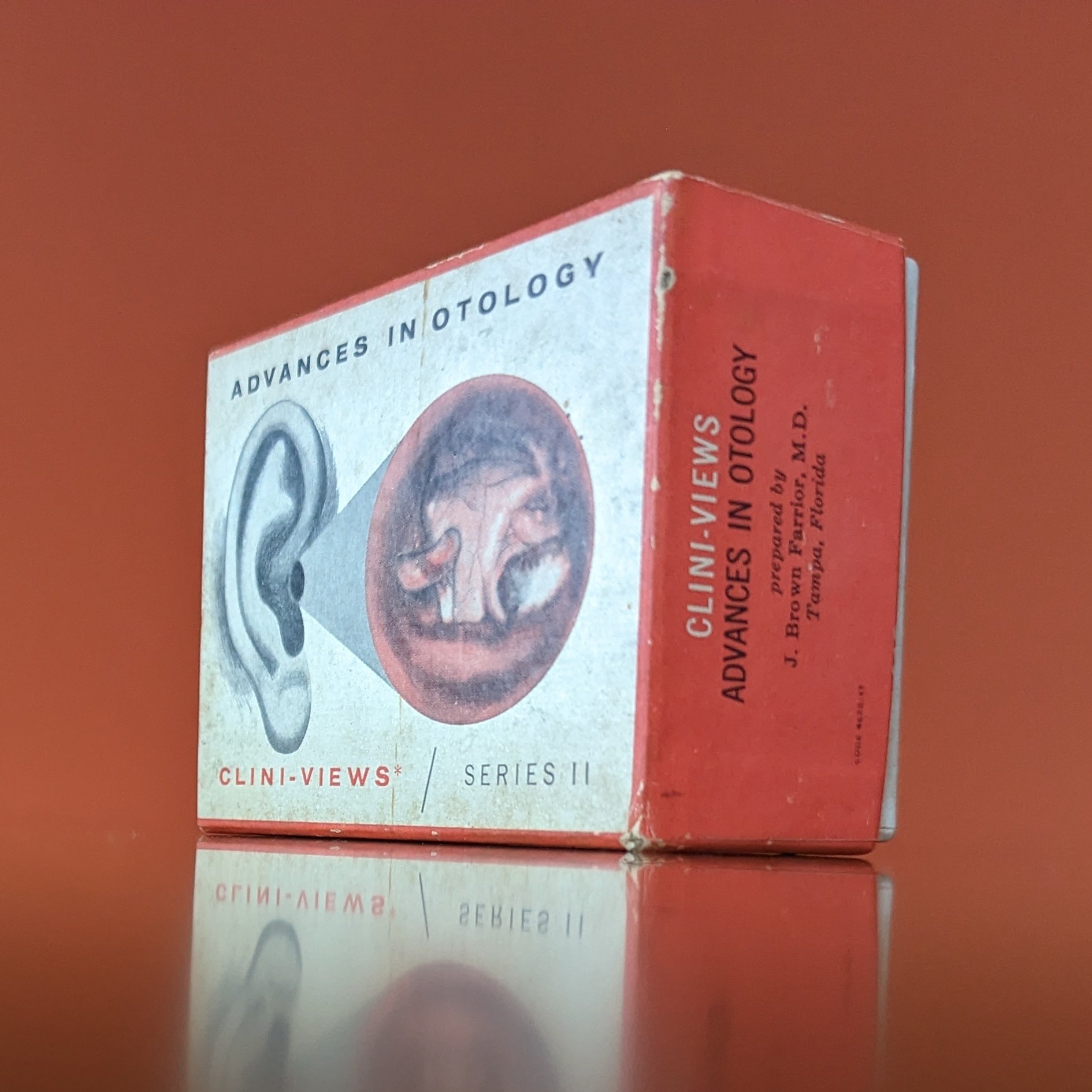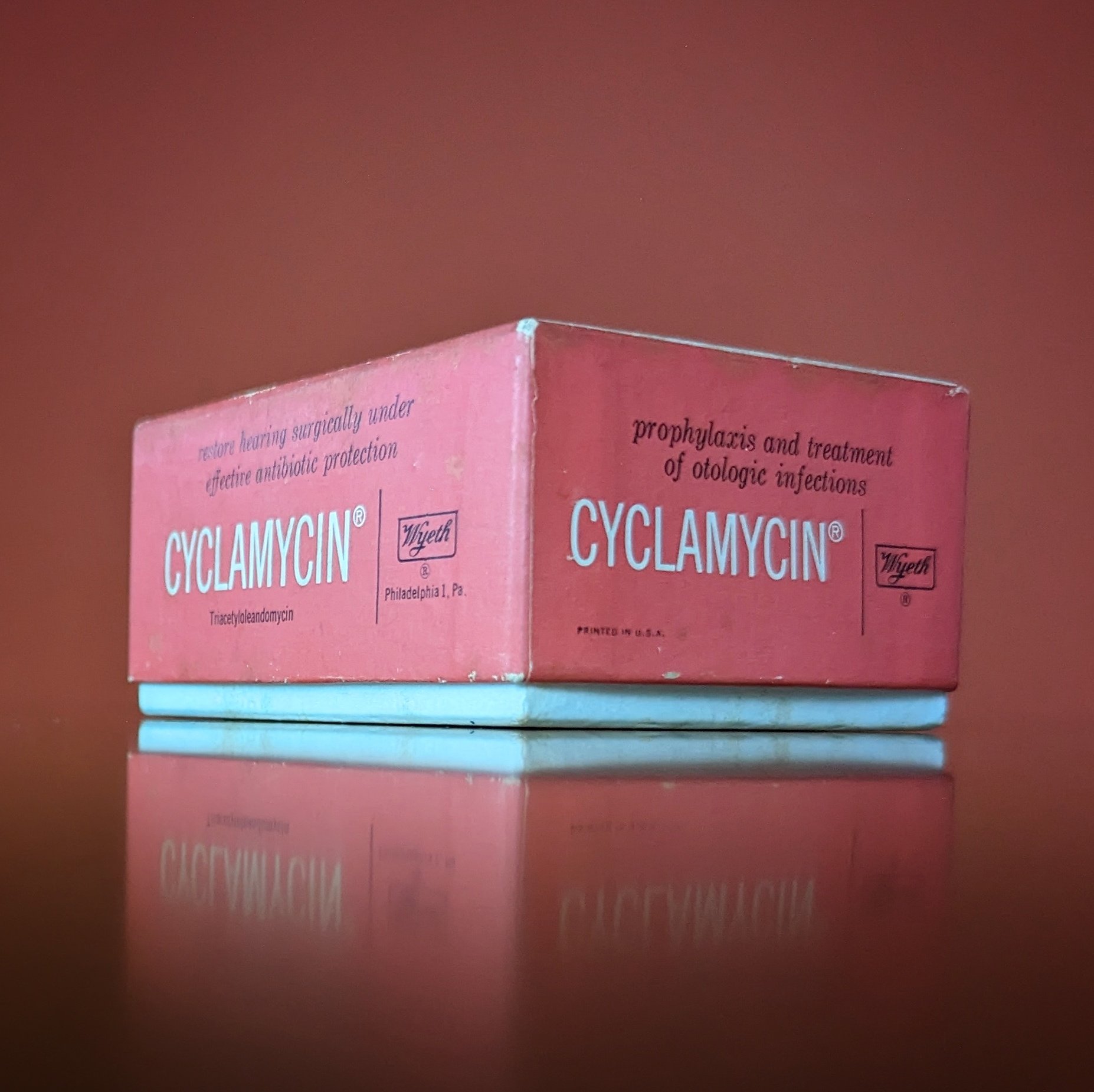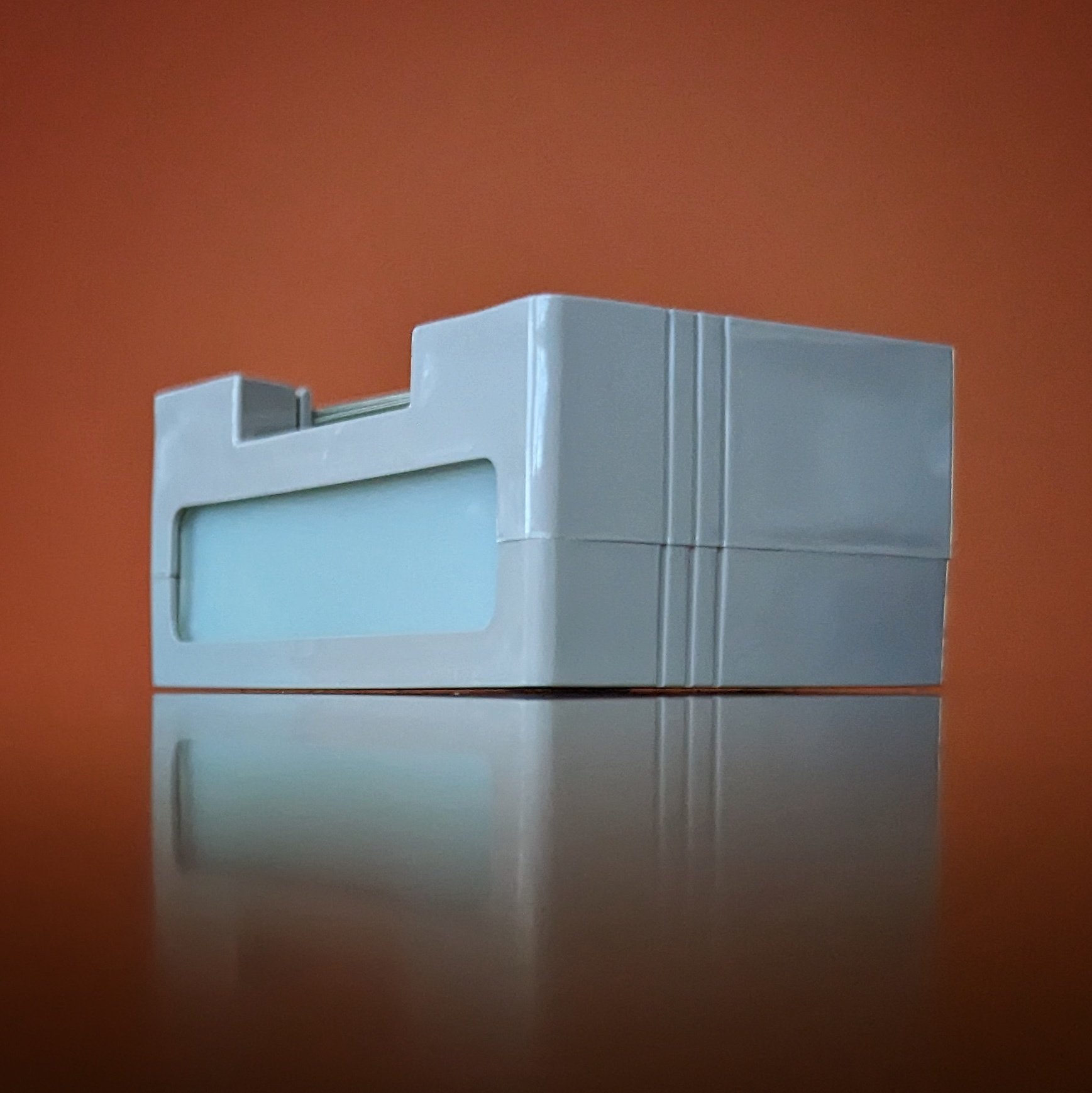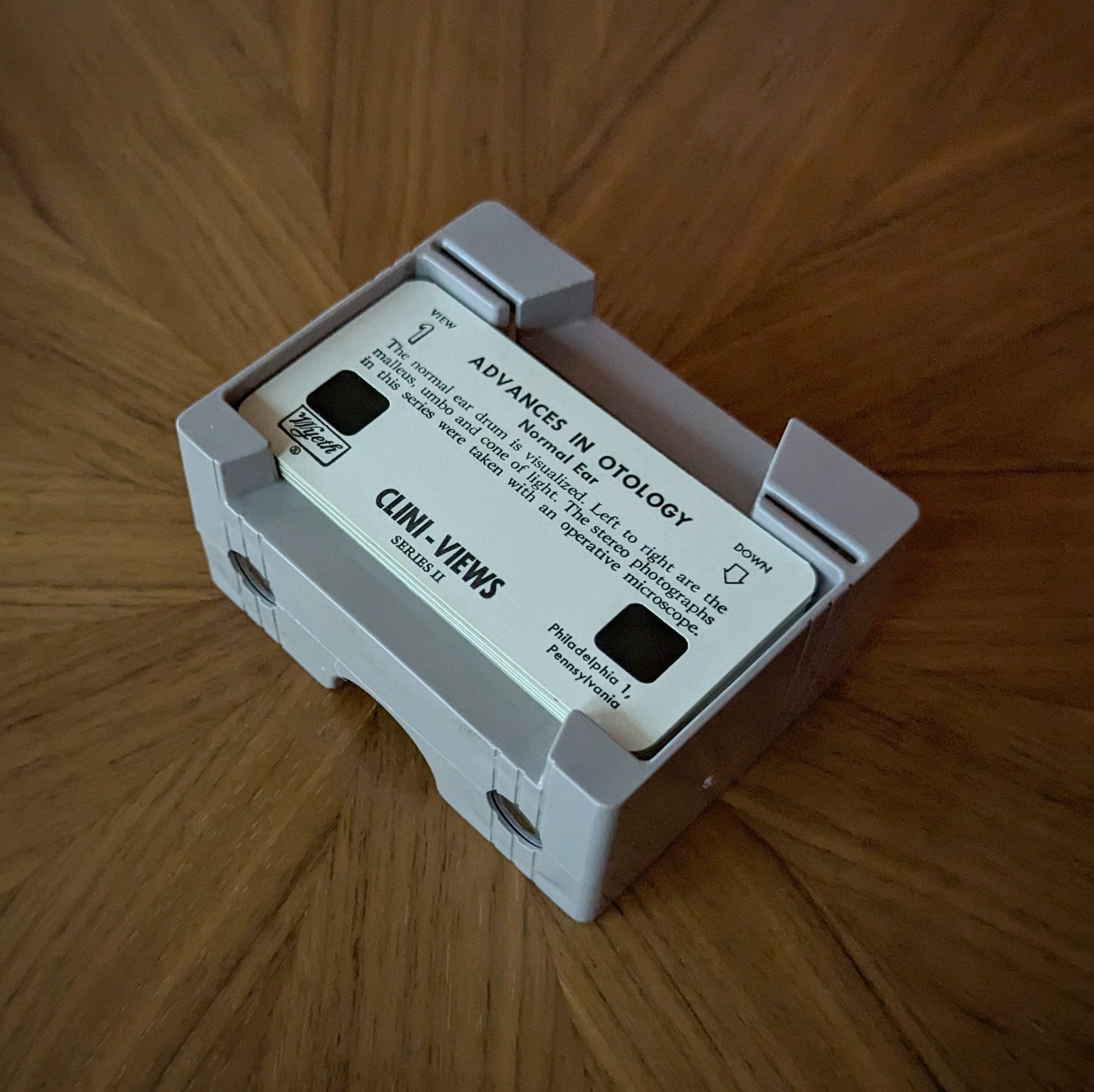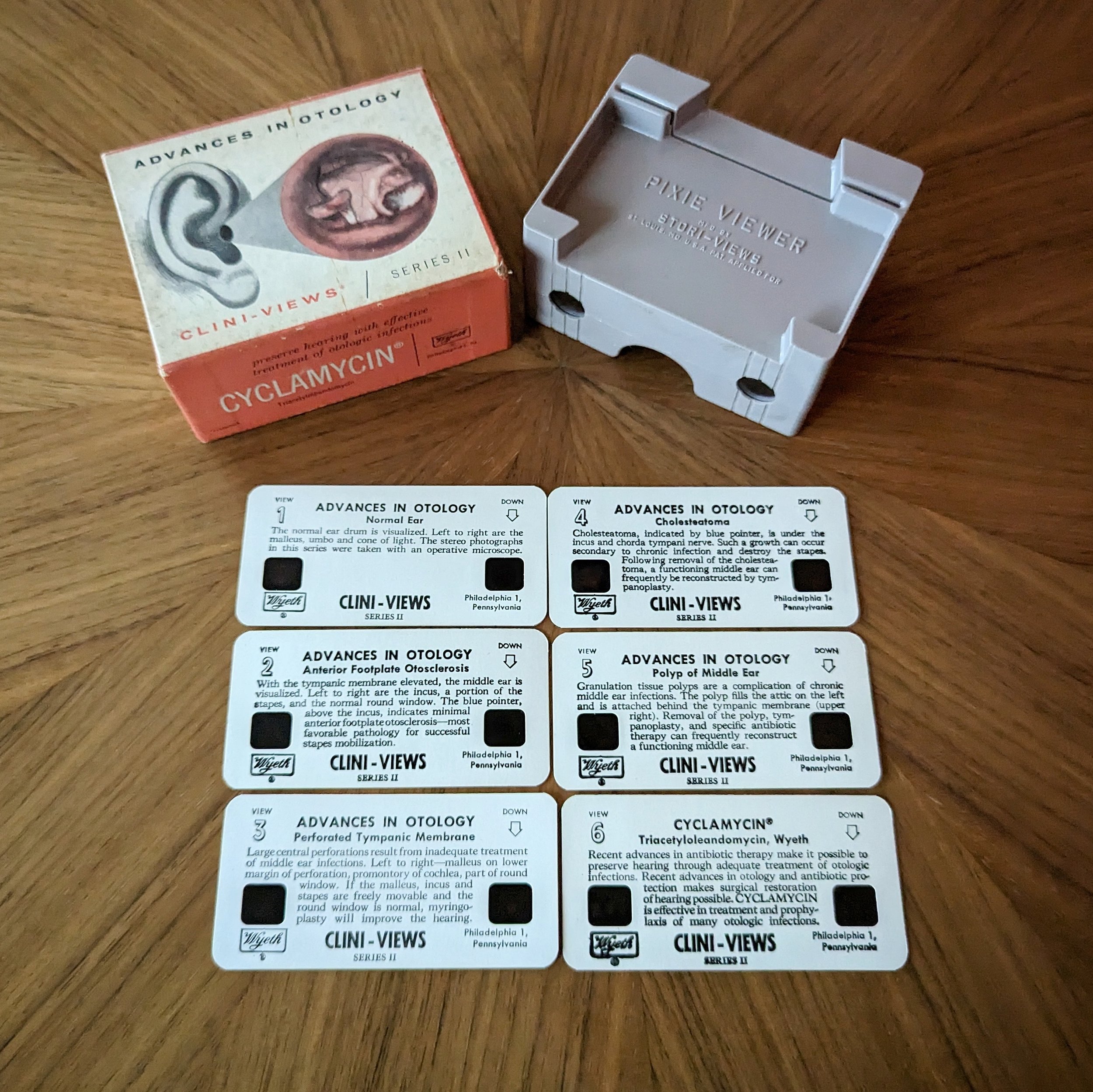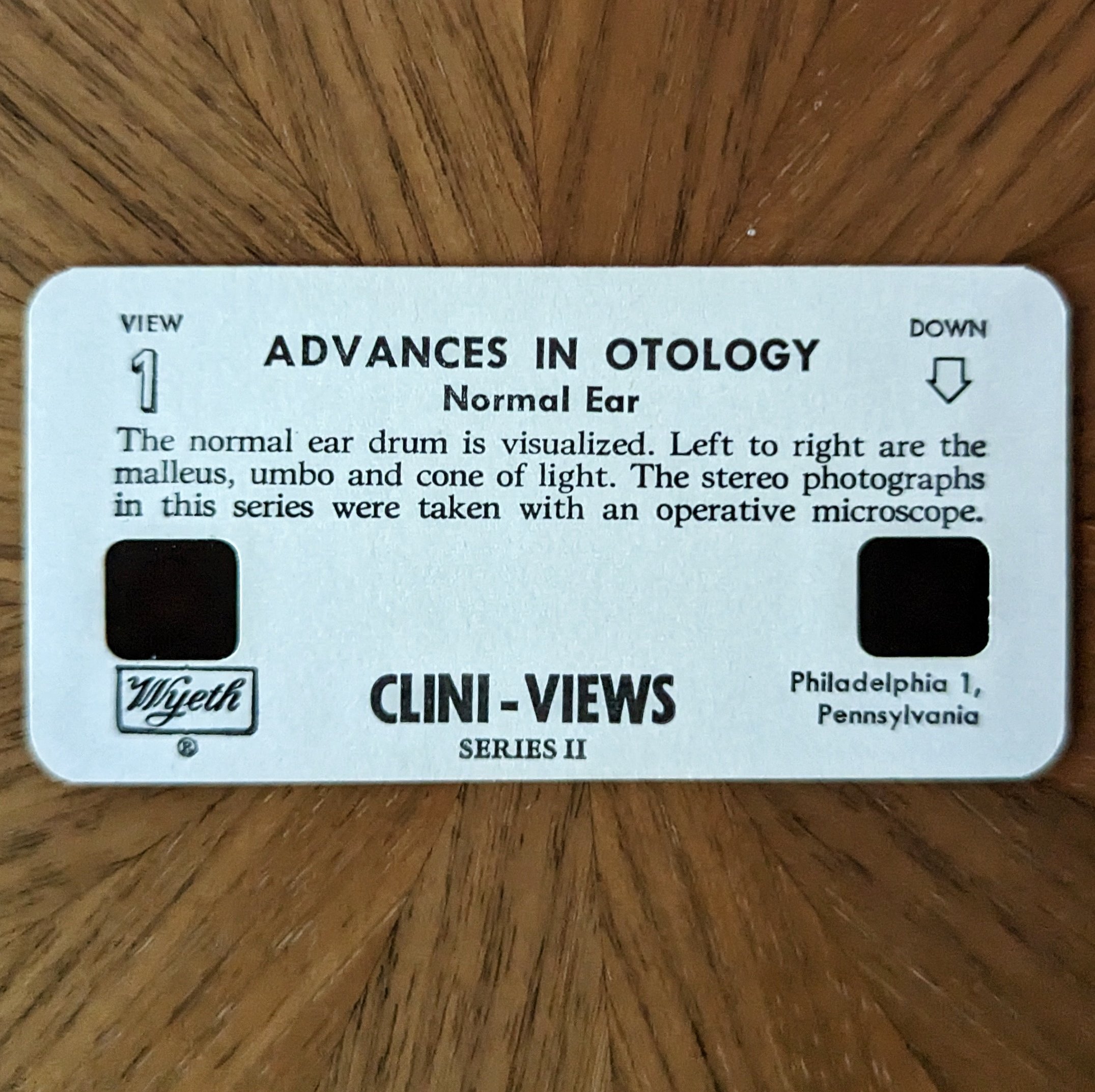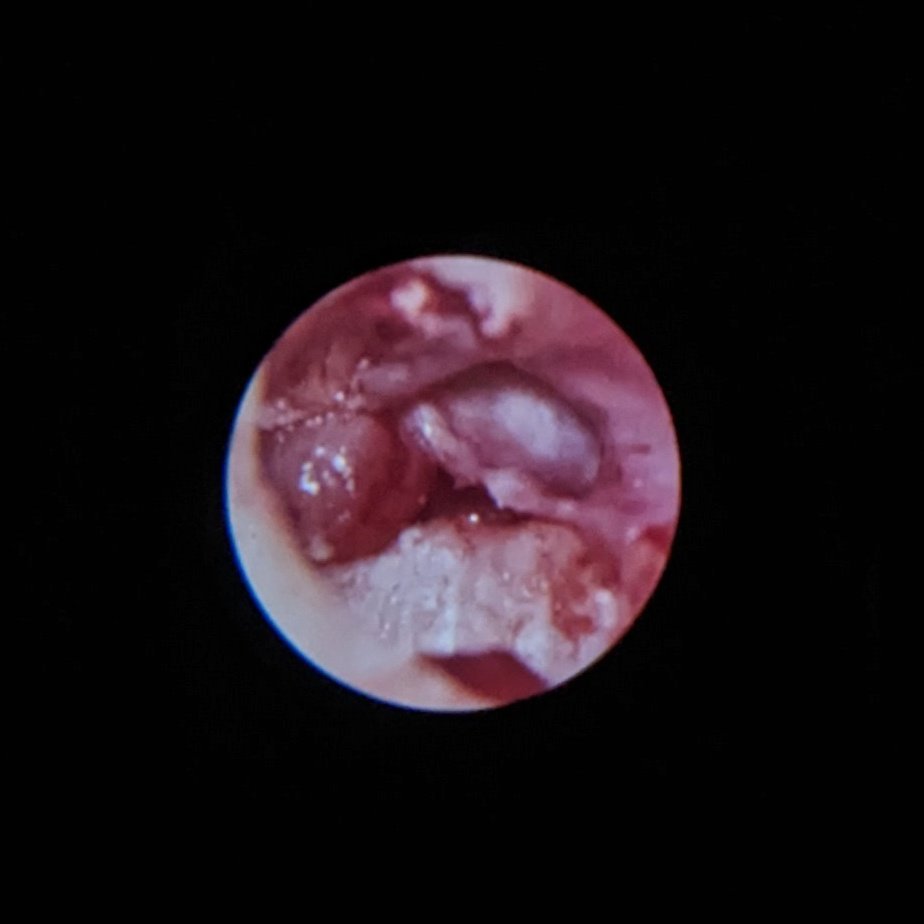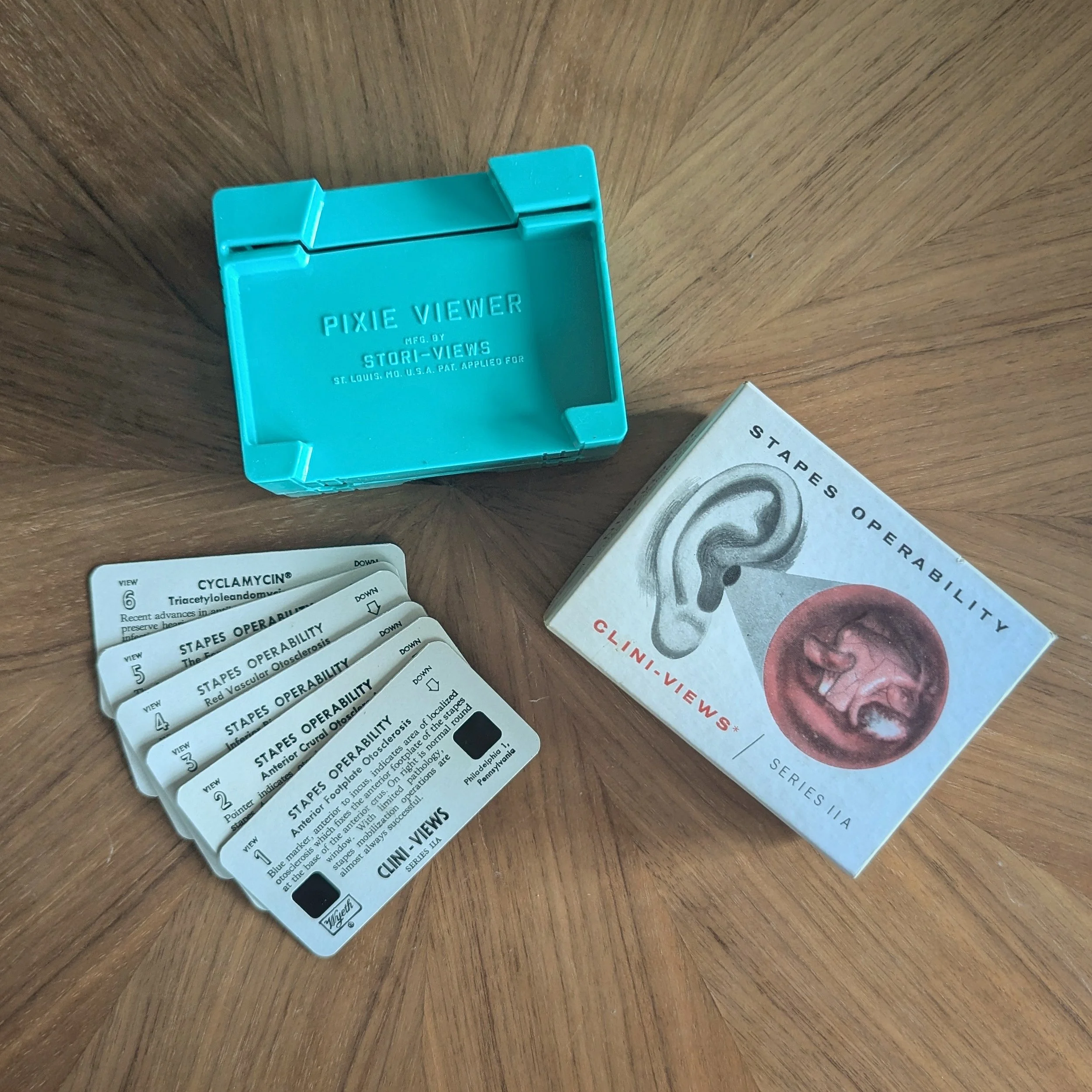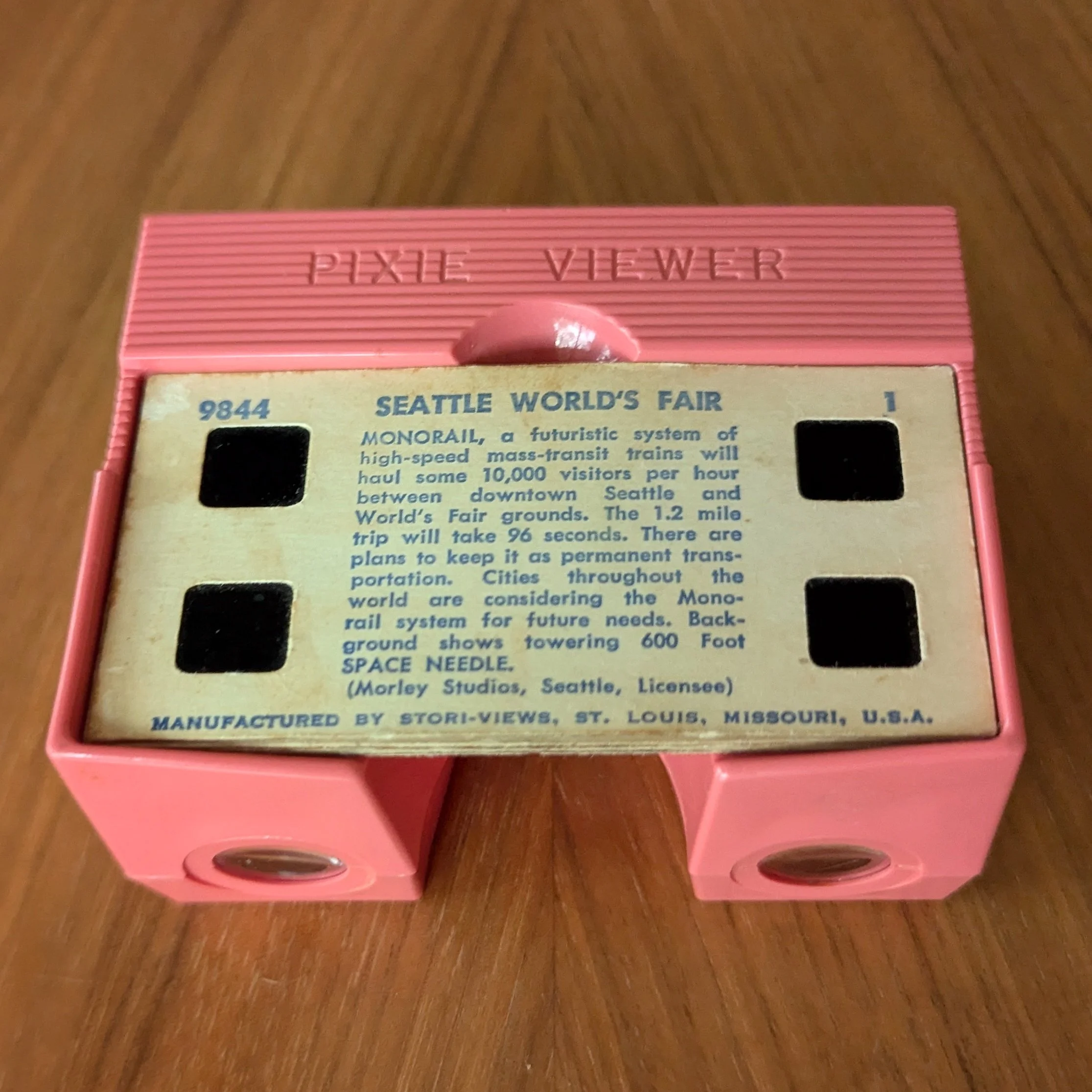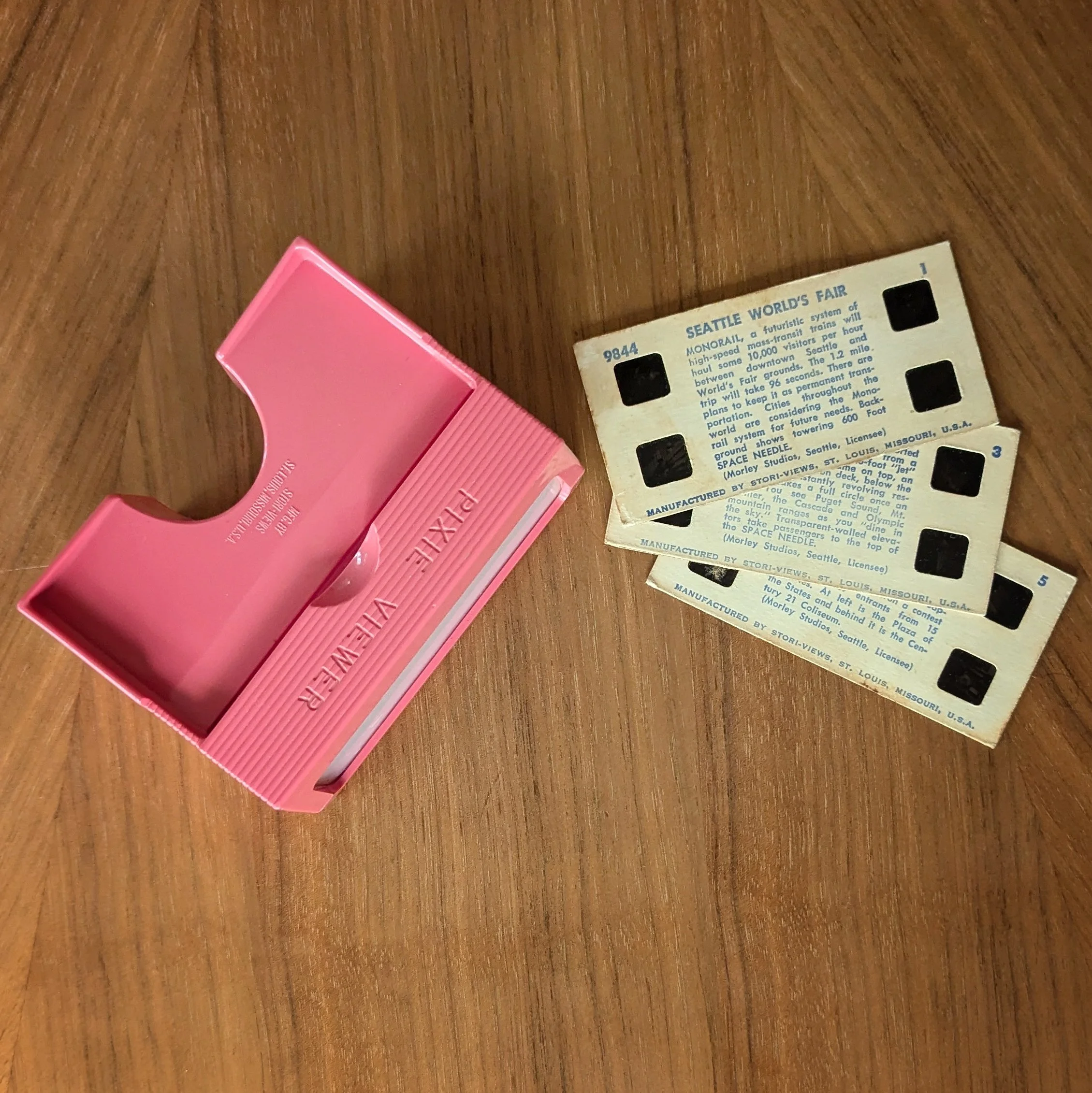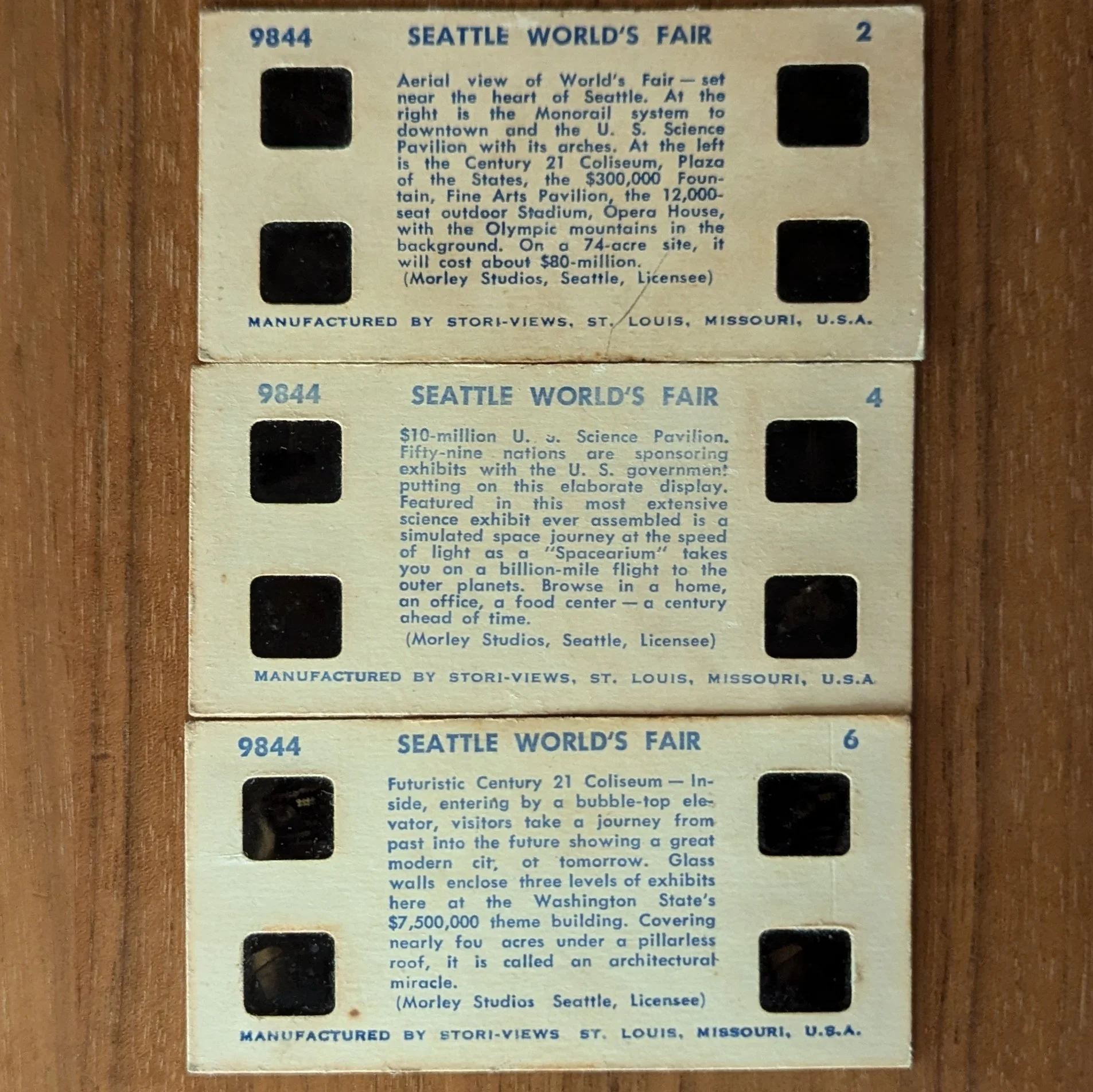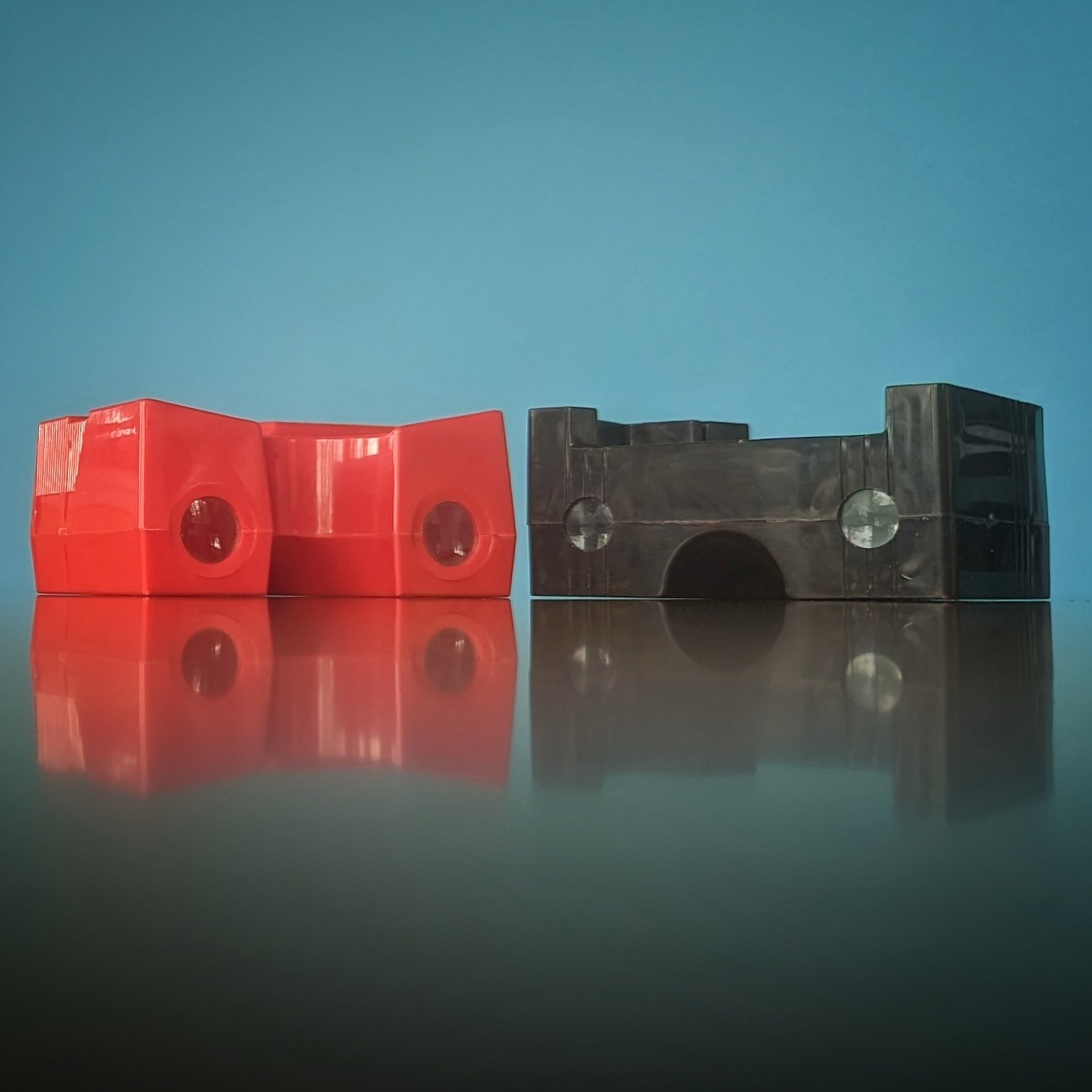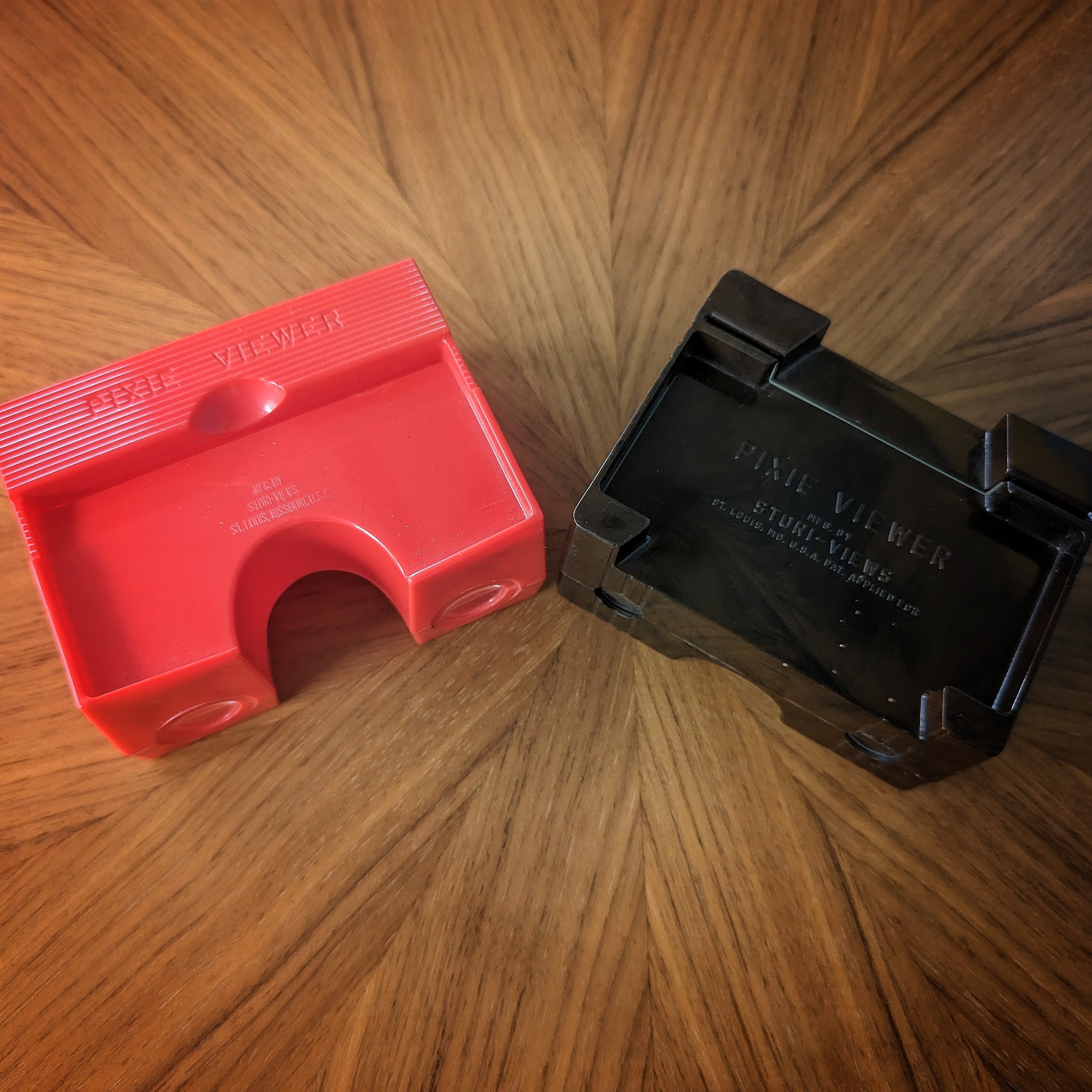Pixie-Viewer
United States, 1950s
The Pixie-Viewer was created by the Stori-Views company, the same company that created the Stori-Viewer. There were 3 versions of the Pixie-Viewer: one cardboard version and two plastic versions. The patent for the cardboard Pixie-Viewer, #2868071, was granted in 1959. Even though the patent was applied for and granted to Henry G. H. Kiehl under Church-Craft Pictures, Inc. in St. Louis, Missouri, the Pixie-Viewer was manufactured under the Stori-Views company name.
The Stori-Views Company
Church-Craft Pictures produced lots of educational and religious materials, including films. One of their divisions was a company called Stori-Views, which is more well-known in the 3D market because of the large volume of stereoviews — known as Stori-Views — they produced.
A Tale of Two Viewers: the Stori-Views Pixie-Viewer and the Church-Craft Stori-Viewer
We know. It’s a lot to keep straight. Here’s the deal: Church-Craft Pictures marketed a 3D viewer under their own name — it was a black bakelite viewer called the Stori-Viewer that looks nothing like the Pixie-Viewers shown below. However, later there were colorful plastic versions of the Stori-Viewer that look a LOT like the Pixie-Viewers below. You can read more about the Stori-Viewers and the history of the Church-Craft and Stori-Views companies on our Stori-Viewer page.
Cardboard Pixie-Viewer
The Pixie-Viewer started out as a creatively efficient and novel cardboard box viewer. Reverend Henry G. Kiehl submitted a patent application for this self-contained stereo viewer where the lens and diffuser apertures and the stereoview slot were all part of the bottom portion of the box, making it double as a stereoview container and viewer. He claimed “there has long been a need for a simple box viewer of the inexpensive disposable type, which can be employed for advertising purposes or for general sale.” Interestingly, the 1918 Pan-chro Scope was one of the viewer patents cited in their application.
Cardboard Pixie-Viewer: Wyeth Ansolysen Clini-Views
Henry Kiehl mentioned advertising purposes in his patent application for the Pixie-Viewer and they didn’t waste time pursuing that angle with this branded Pixie-Viewer for Wyeth where the Stori-Views have been re-branded as “Clini-Views.”
Plastic Style 1 Pixie-Viewer
The cardboard Pixie-Viewer evolved into two different plastic viewers, both of which continued to mimic a design feature of the earlier cardboard viewer: they had a built-in space for holding cards on top of the viewer. The Stori-Views company would later produce unnamed plastic viewers (see our Stori-Viewer page) that are often confused with official Pixie-Viewers because of their similar size, shape, and colors, but one way to tell them apart: the unnamed plastic viewers from Stori-Views did not have the cardholder feature found on the Pixie-Viewers.
This first style has the words “Pixie Viewer” embossed in the cardholder area so the branding is hidden when it’s holding stereoviews. We this one in marbled brown, gray, and turquoise, and we’ve found it in two differently designed special “look-through” boxes and also in special advertising sets.
Plastic Style 1 Pixie-Viewer: Look-thu Box Comparison
The box on the right uses a sans-serif font and has a clown as part of the branding. Also, the one on the right references the stereoviews as “Pixie-Views” and mentions a “Pixie-View” library on the bottom while the one on the left makes no mention of the term “Pixie-View” anywhere on the box.
Plastic Style 1 Pixie-Viewer: Example of Separately Packaged “Pixie-Views”
All the Pixie-Views we’ve seen have been of this size, but not all have 2 stereoviews per card — some have just 1. Note that this packaging has the sans-serif font and clown.
Plastic Style 1 Pixie-Viewer: 1958 Example of Dealer Advertising
This advertisement, targeted at toy dealers, promotes the new Pixie-Viewer as “profitable” and its peek-through box as “self-merchandising.” We’re skeptical about the claim of “many hours of fun” for kids — over what time period? Days? Weeks? The branding in this ad uses the serif font and no clown, and shows one view per card.
Plastic Style 1 Pixie-Viewer: Arkansas Traveler
Just because they switched from cardboard to plastic doesn’t mean they gave up on advertising as a use case for the Pixie-Viewer, as evidenced by this set for Arkansas Traveler Aluminum Boats. The viewer itself is not branded but the box and stereoviews are.
Plastic Style 1 Pixie-Viewer: Wyeth Cyclamycin - Advances in Otology
Just like with the cardboard Pixie-Viewer above, they were able to get Wyeth to sign on as an advertiser. This time the Clini-Views are packaged with their plastic Style 1 Pixie-Viewer and advertised Cyclamycin and their Advances in Otology.
Plastic Style 1 Pixie-Viewer: Wyeth Cyclamycin - Stapes Operability
Another Wyeth Clini-Views set with the plastic Style 1 viewer.
Plastic Style 2 Pixie-Viewer
This second style of the plastic Pixie-Viewer has horizontal grooves near the diffuser, with the words “Pixie Viewer” engraved on top of the grooves. Just like Style 1 above, it has a space on top for holding cards, but with this style, the Pixie Viewer branding is still visible while holding stereoviews. We have this one in red and turquoise. We also have a pink one, which might only be a very faded red viewer. While we haven’t seen an advertising set using this Style 2 viewer, we do have a special Seattle World’s Fair set that includes it.
Plastic Style 2 Pixie-Viewer: 1962 Seattle World's Fair
A special Stori-Views set for the Seattle World’s Fair, also known as the Century 21 Exposition.
